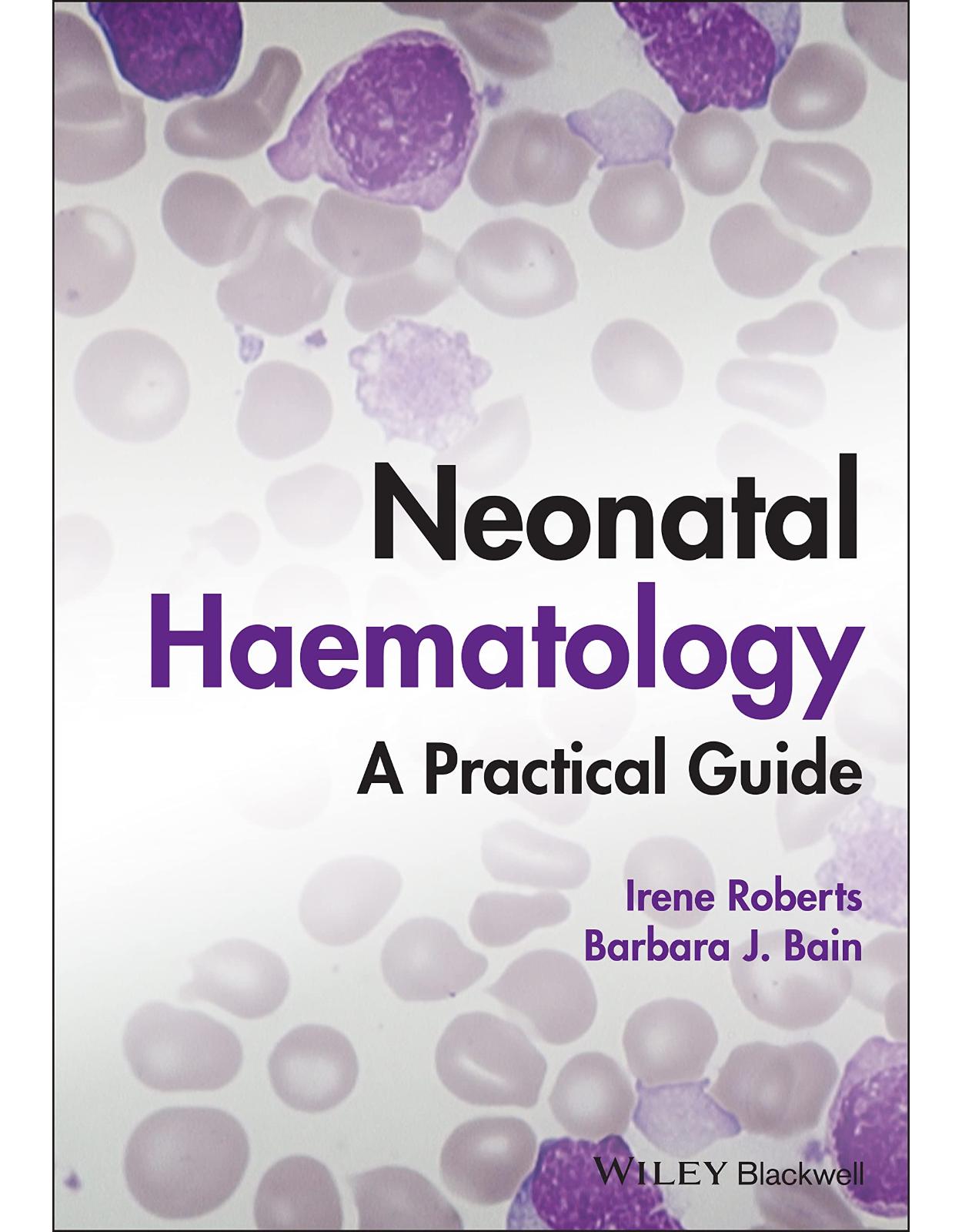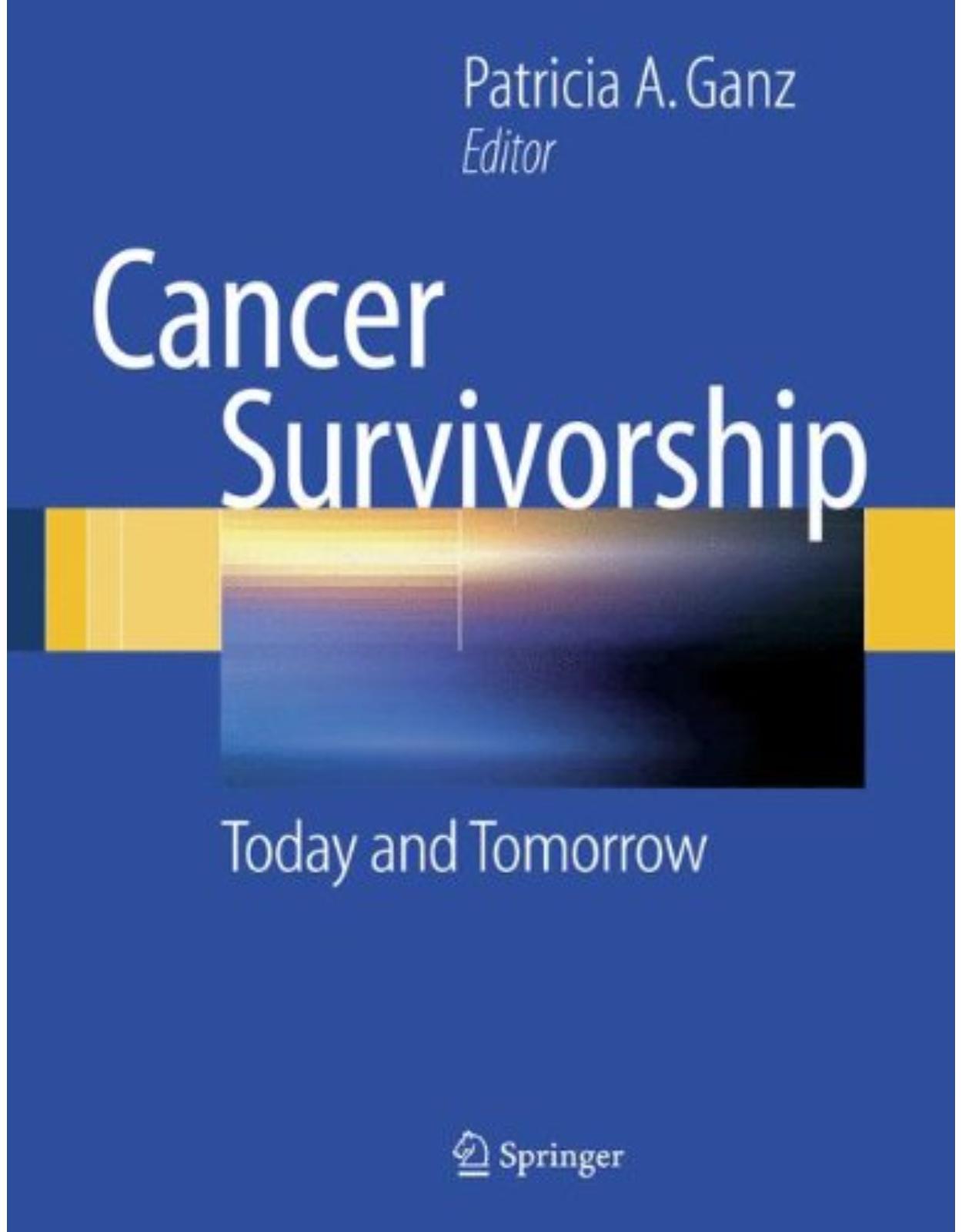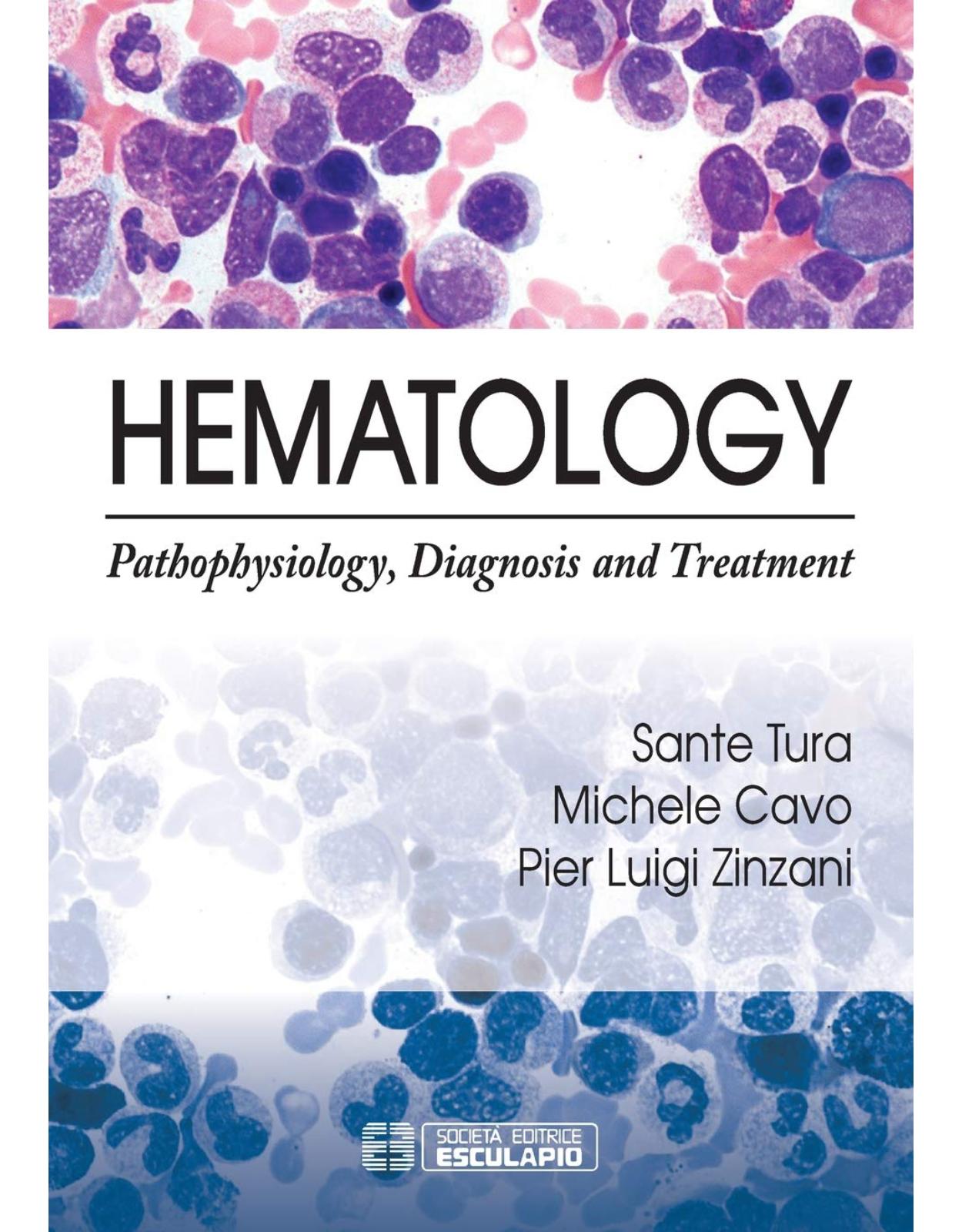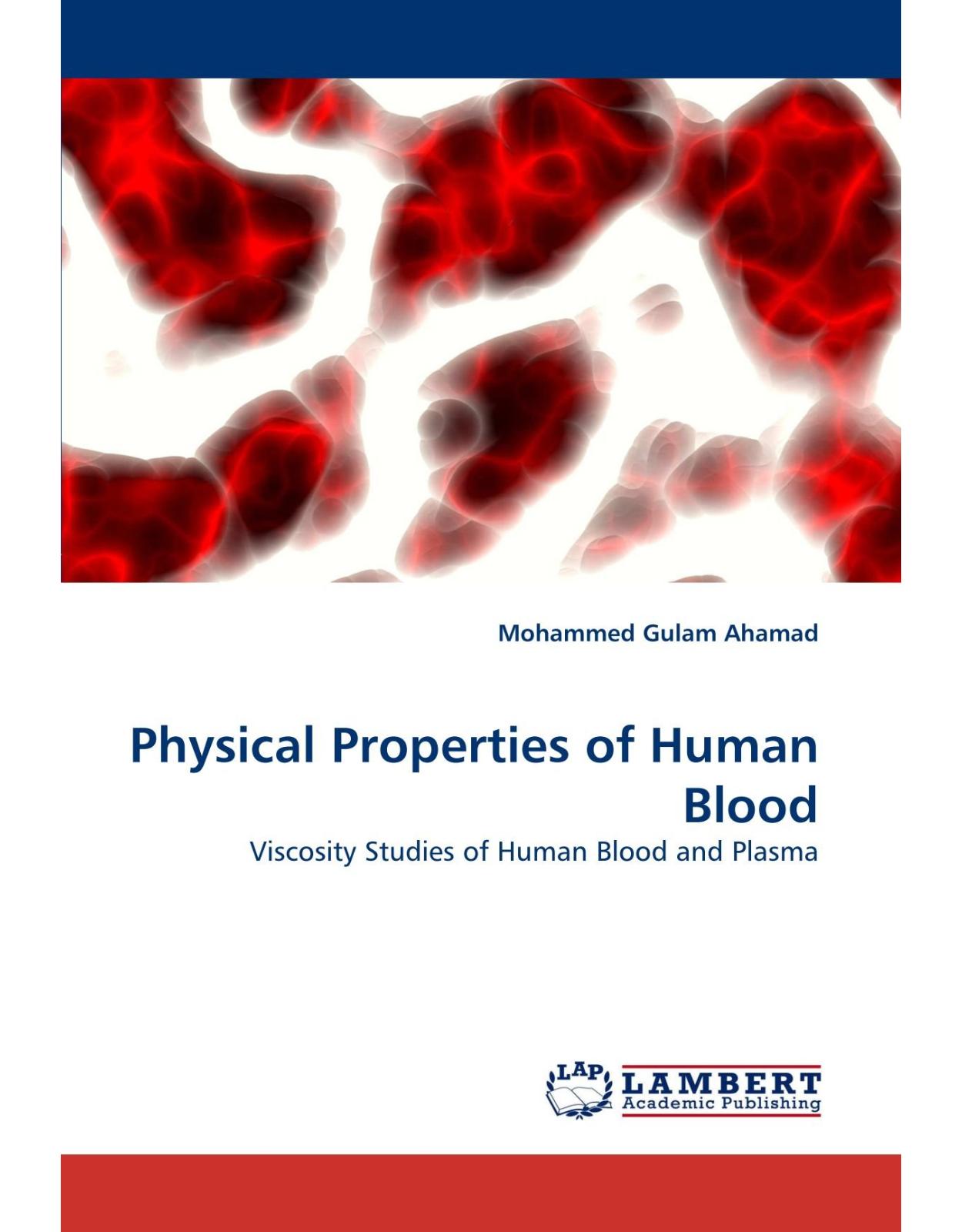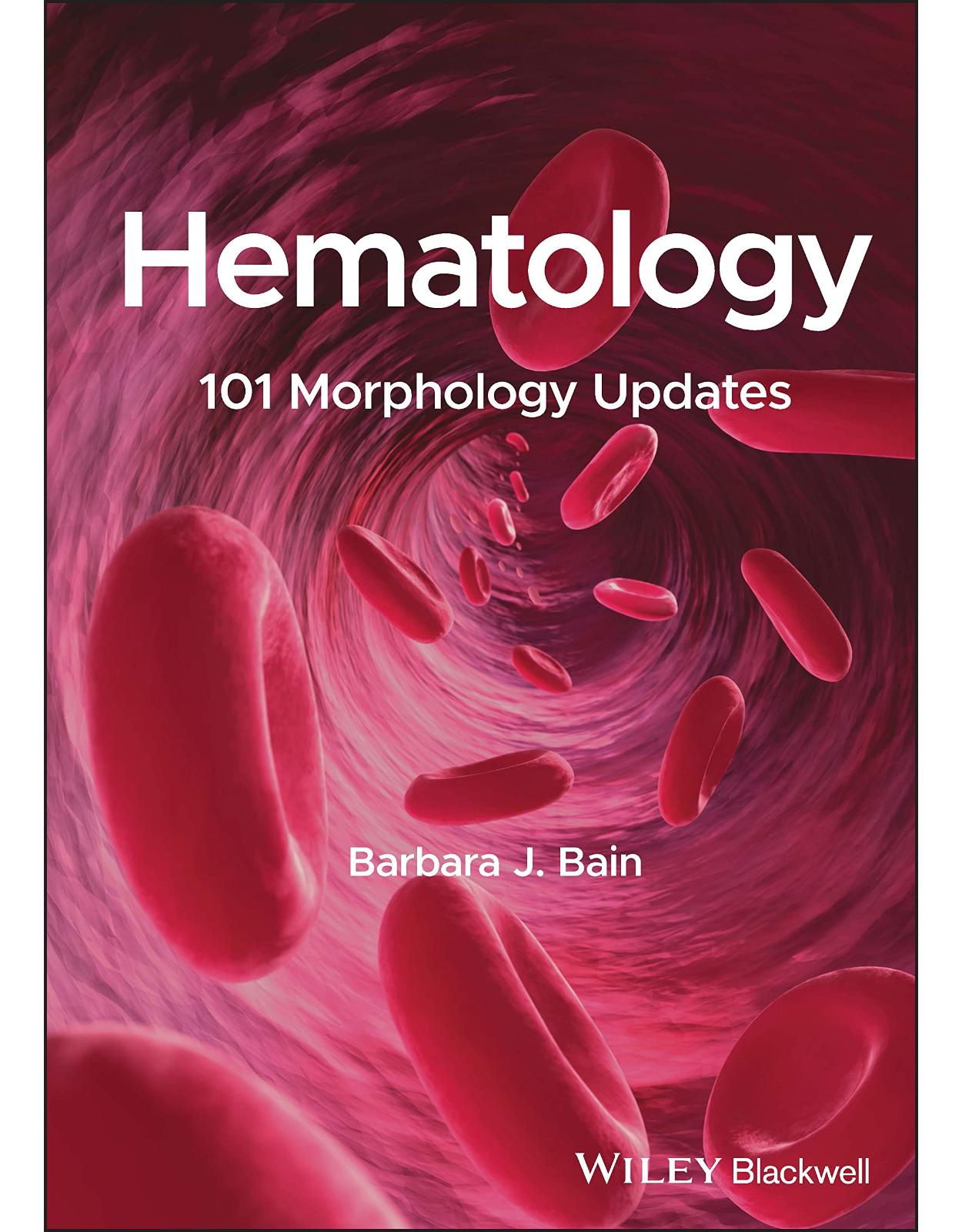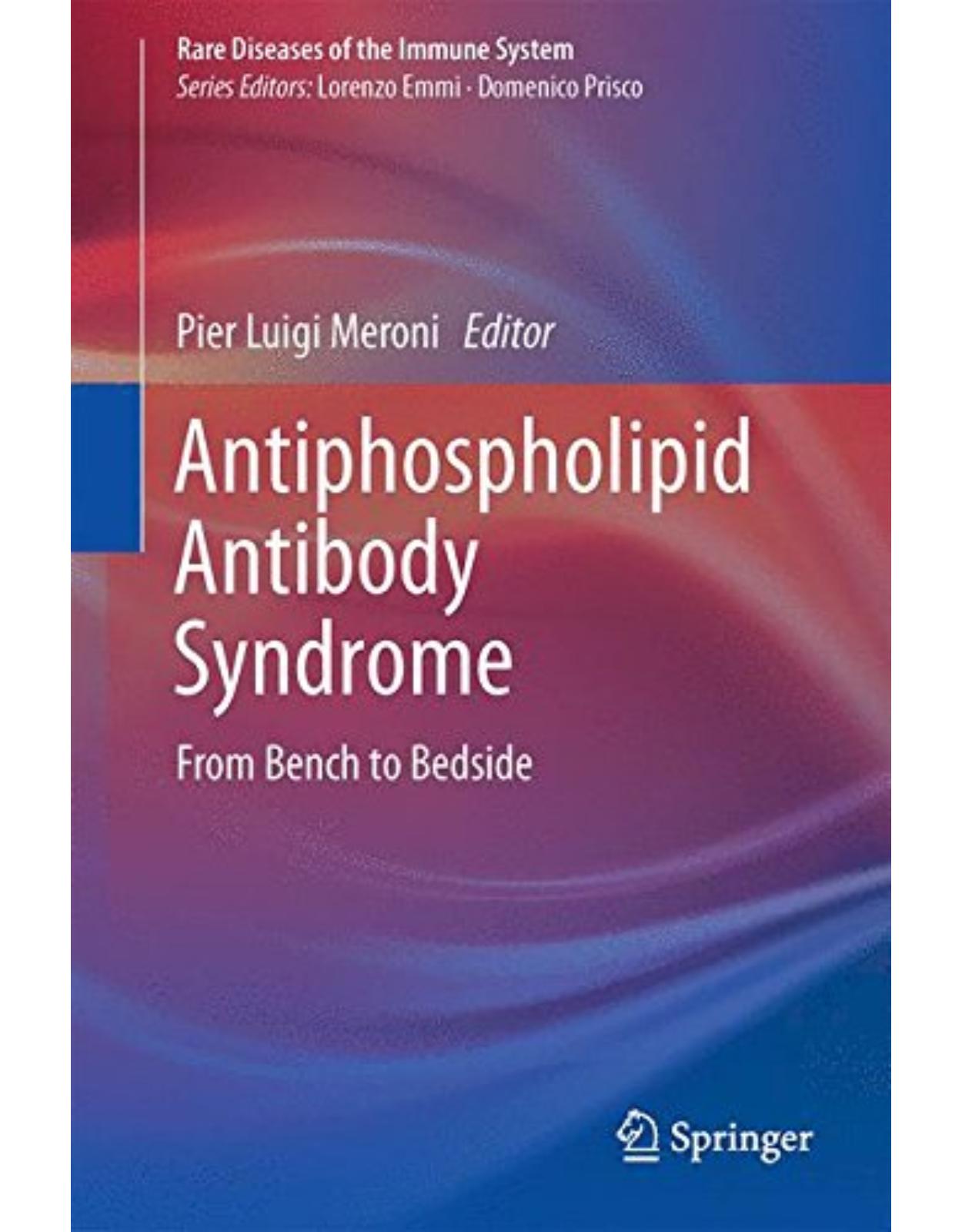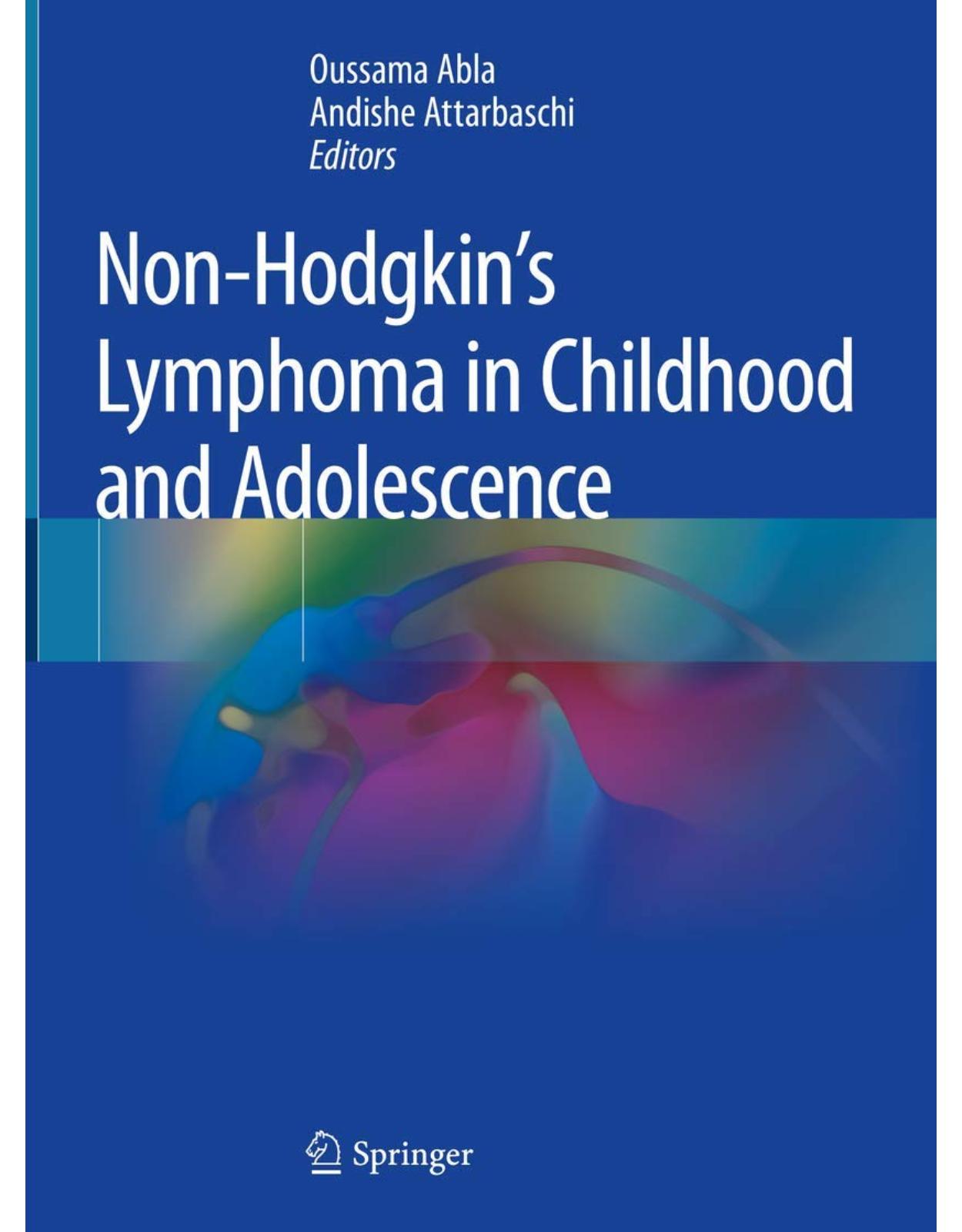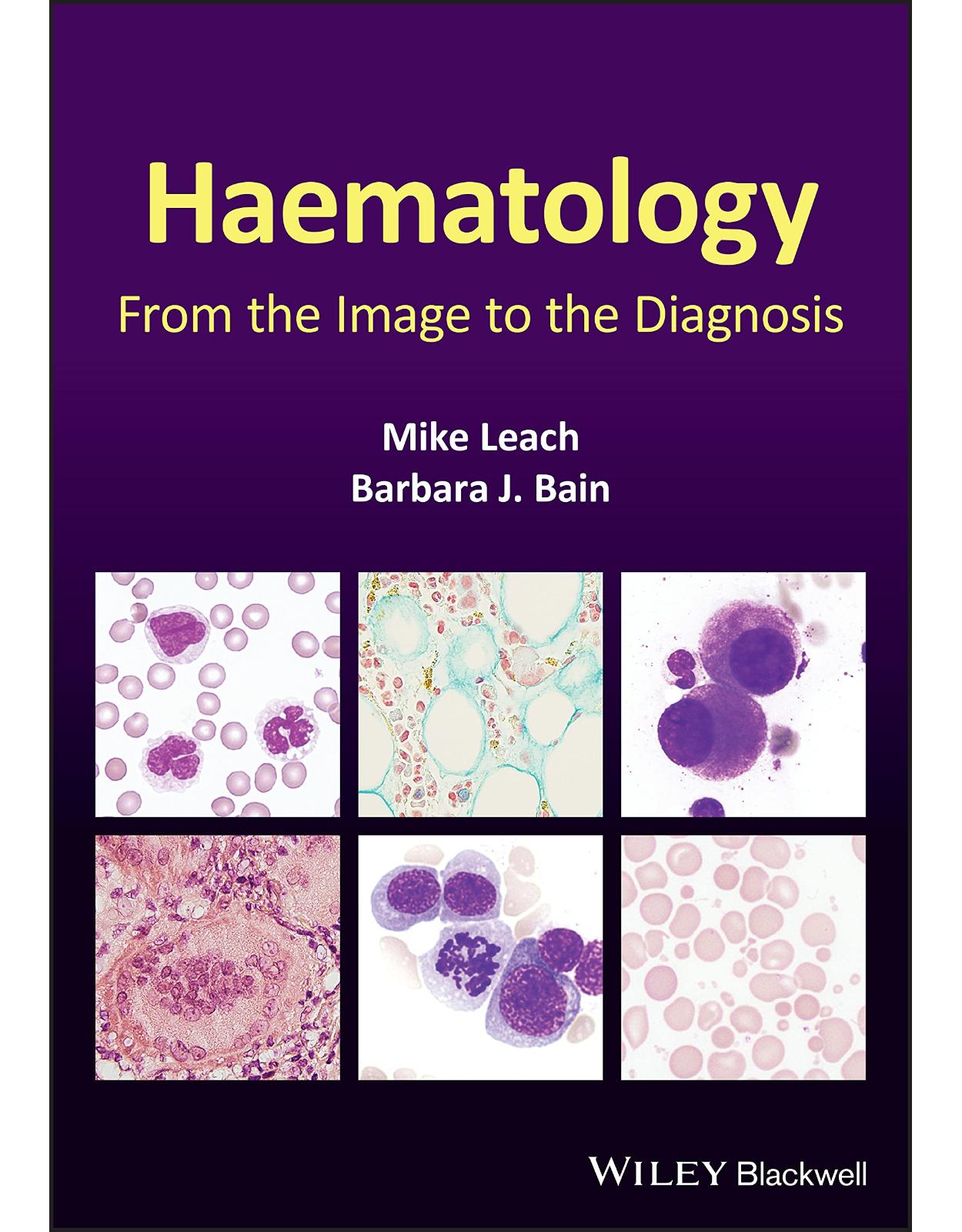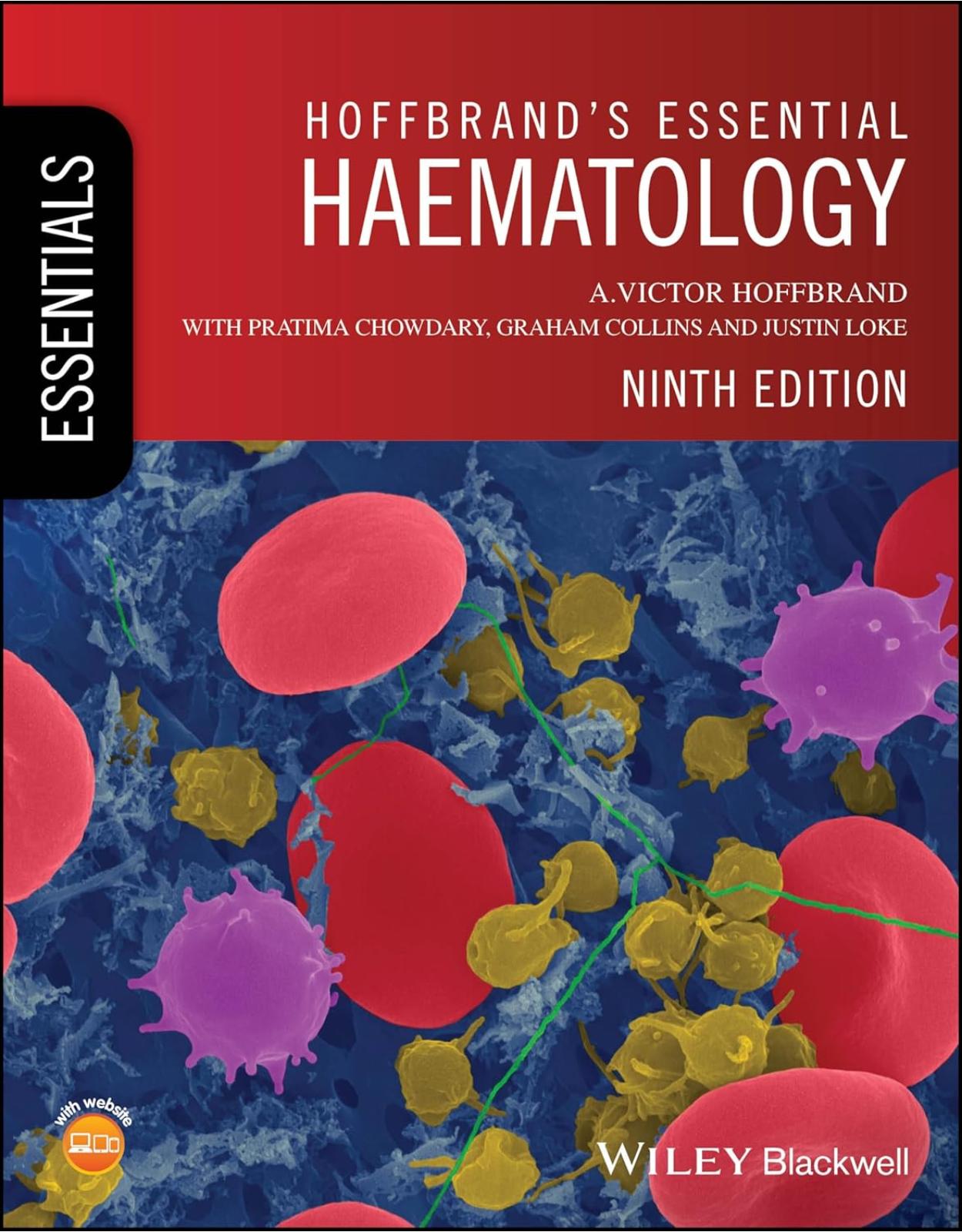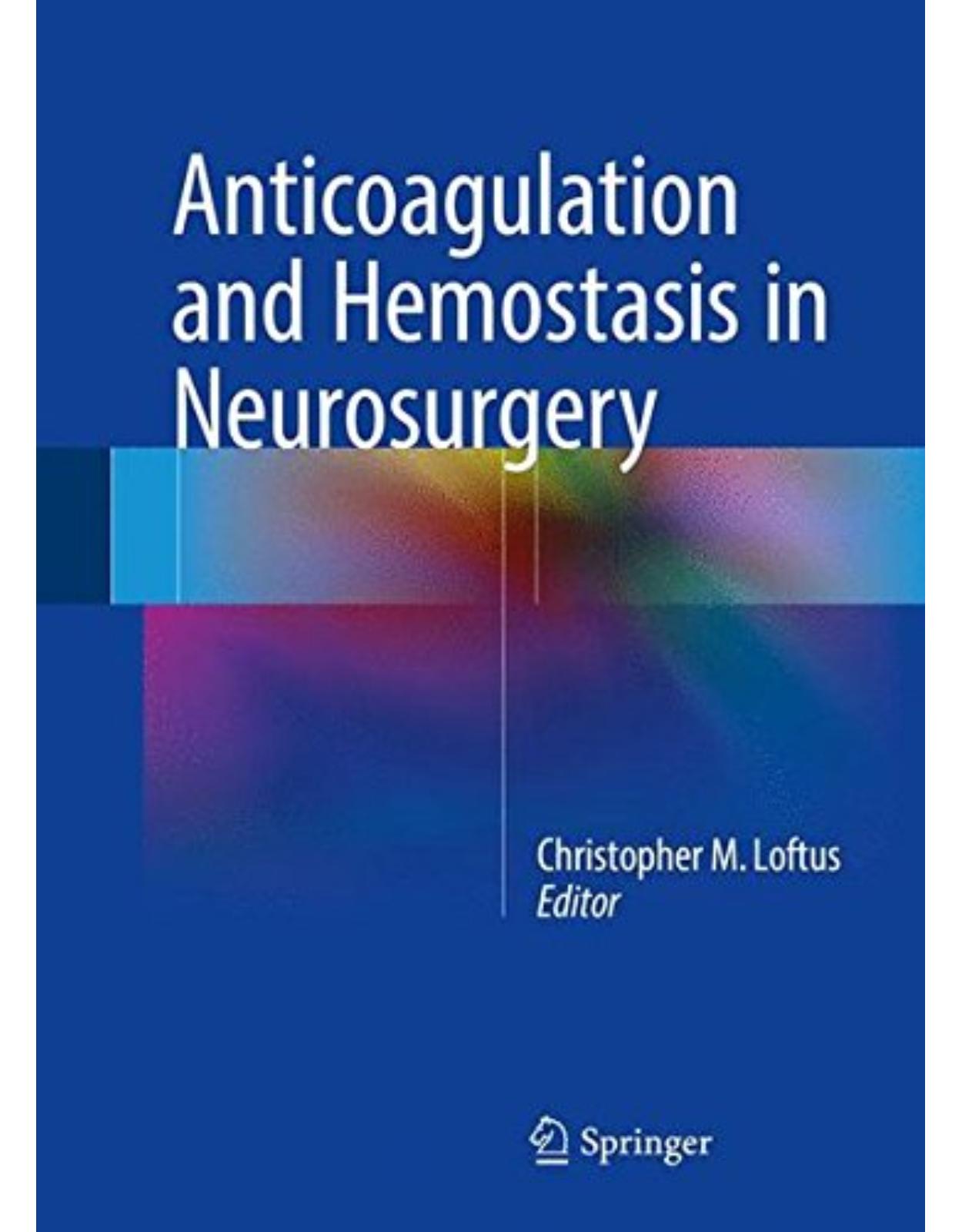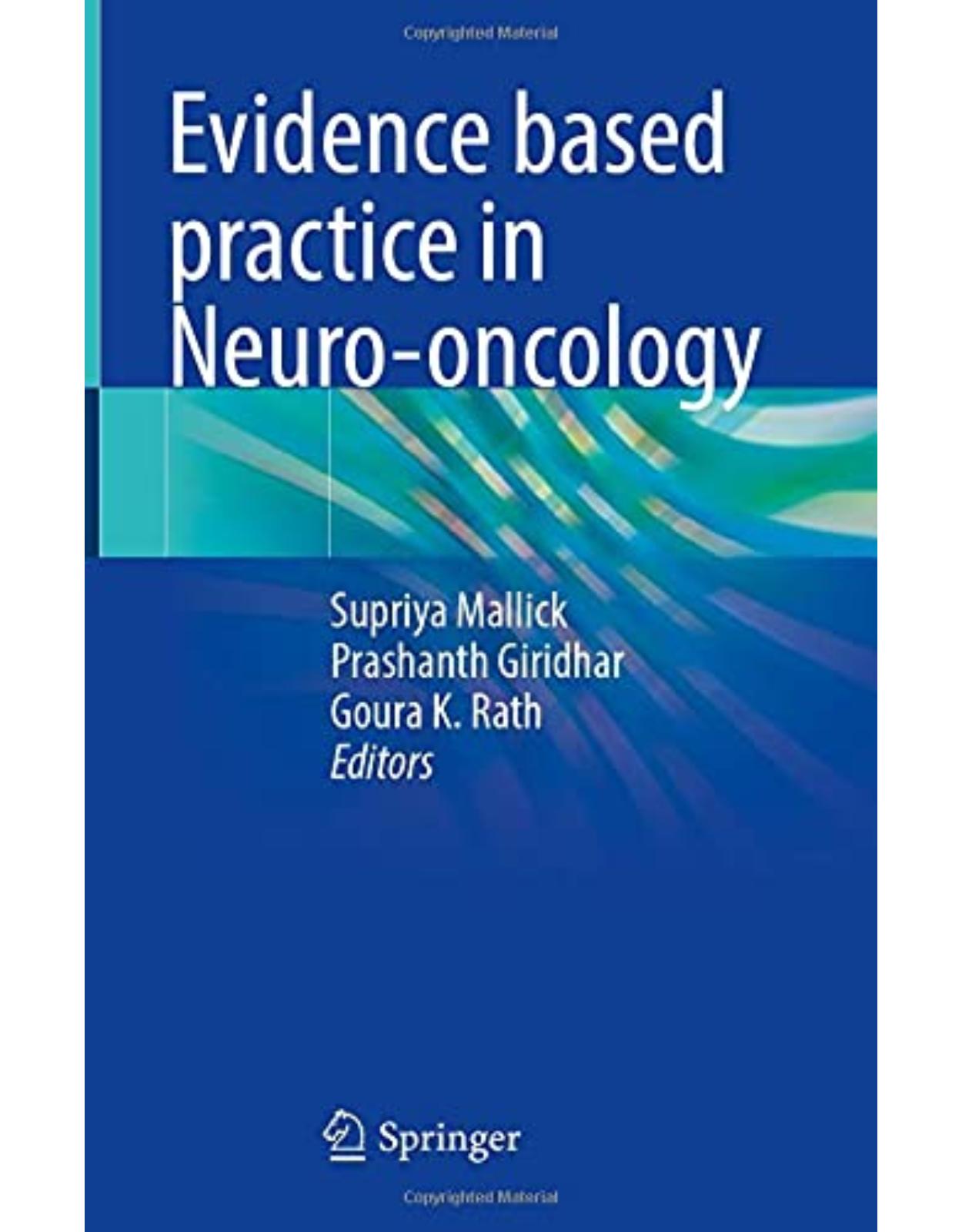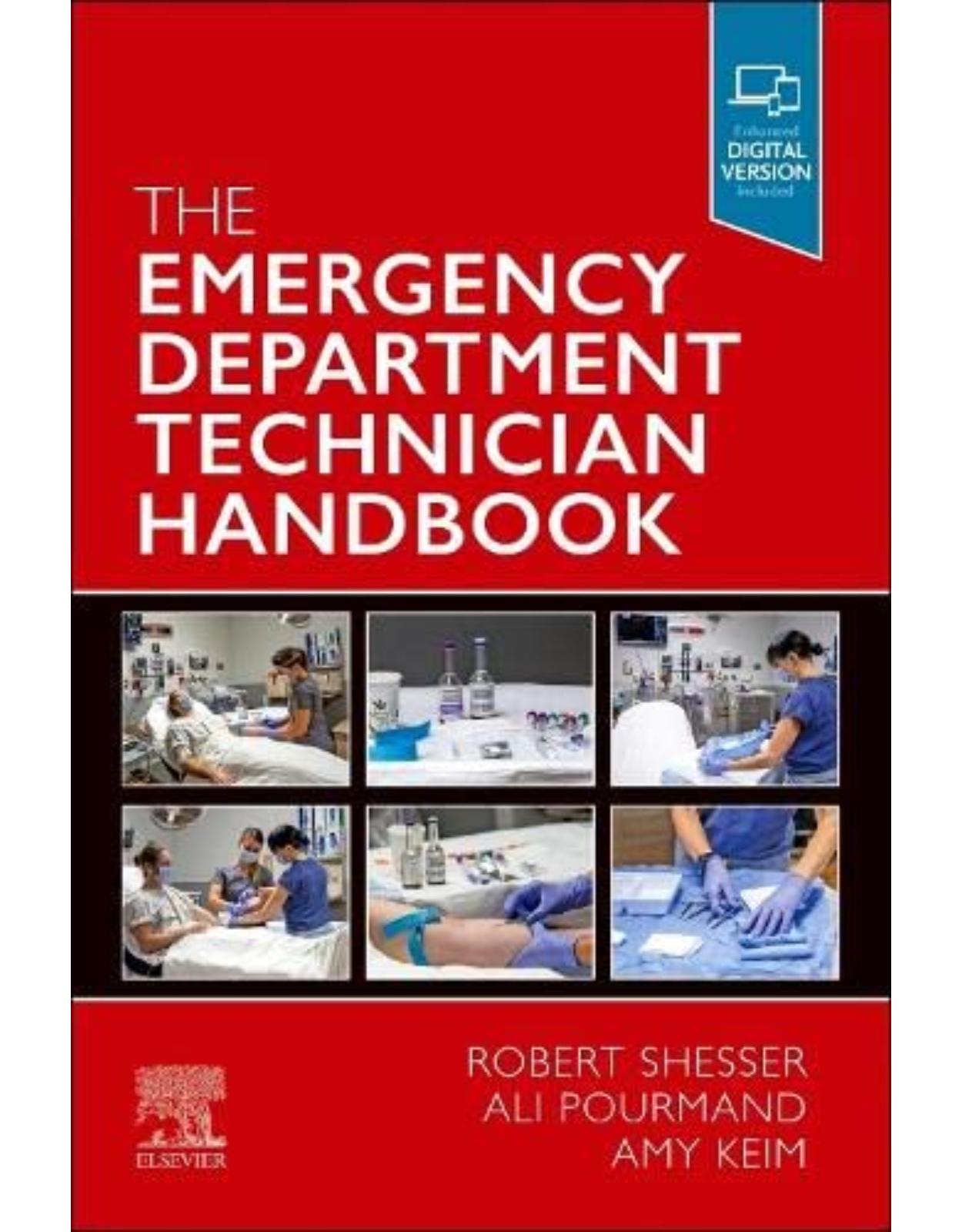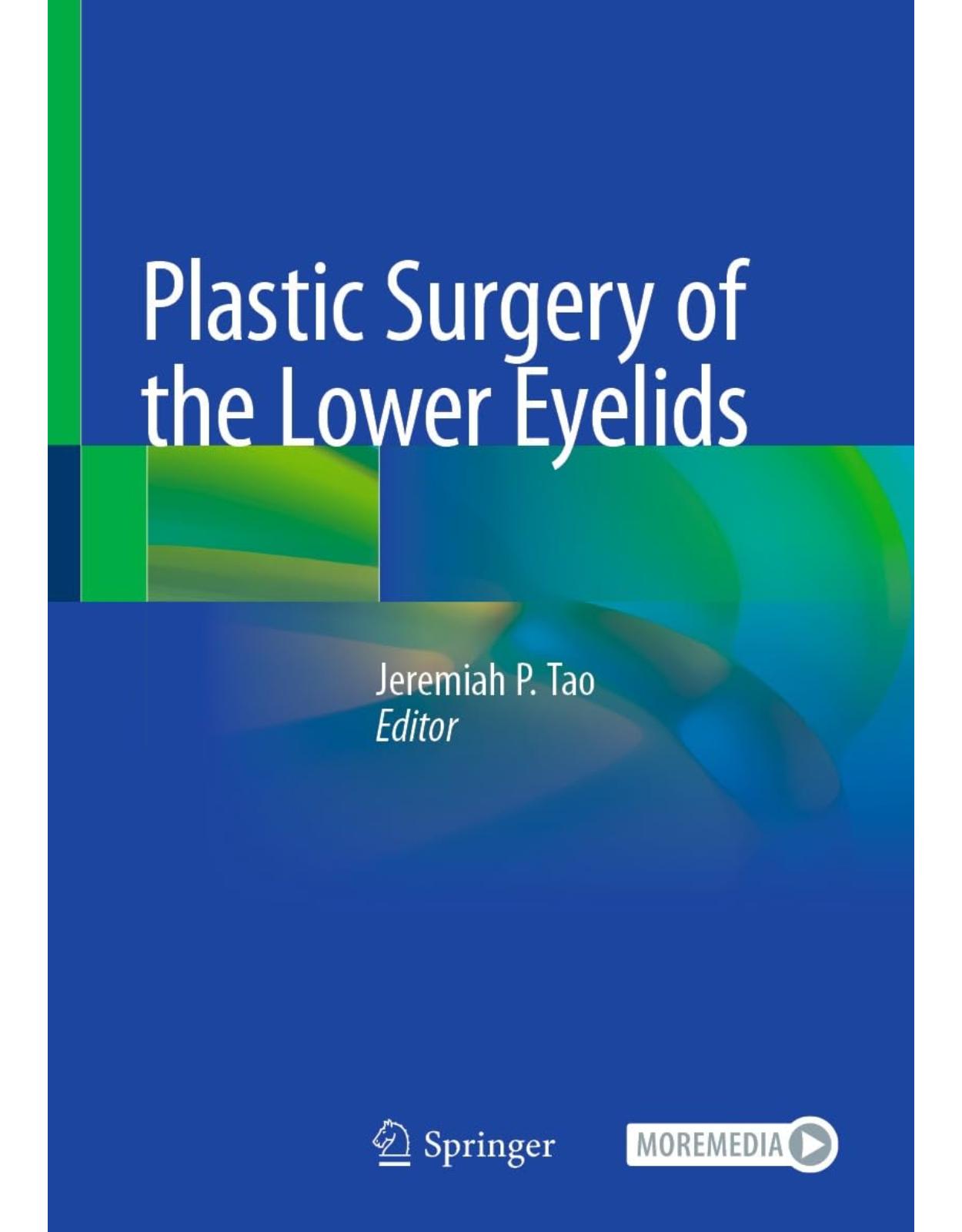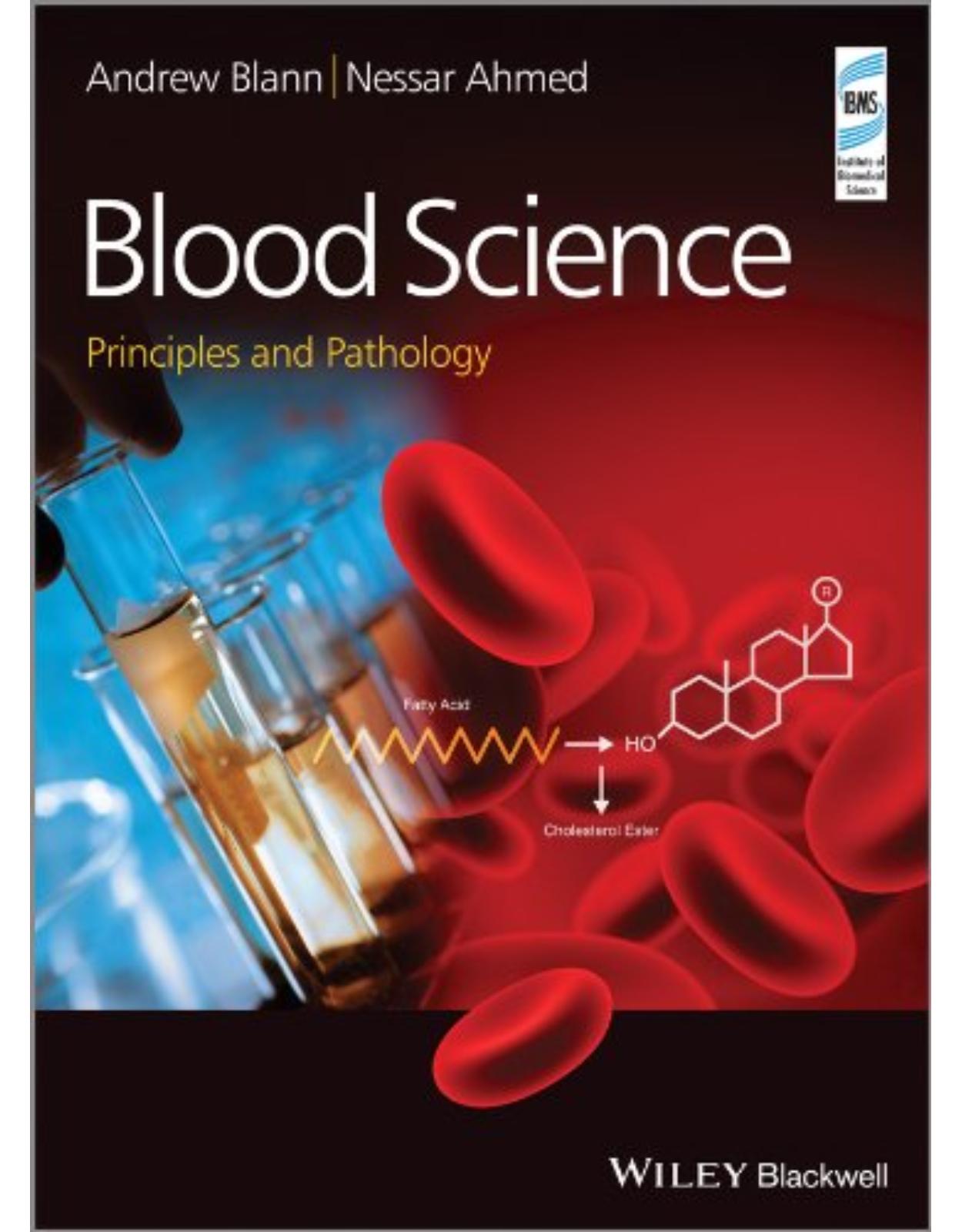
Blood Science: Principles and Pathology
Livrare gratis la comenzi peste 500 RON. Pentru celelalte comenzi livrarea este 20 RON.
Disponibilitate: La comanda in aproximativ 4 saptamani
Autor: Andrew Blann, Nessar Ahmed
Editura: John Wiley & Sons
Limba: Engleza
Nr. pagini: 556
Coperta: Paperback
Dimensiuni: 19.05 x 2.34 x 24.64 cm
An aparitie: 2014
Description:
An integrated textbook on Blood Science, haematology, clinical biochemistry and immunology, in accordance with the changing educational and training structure for Biomedical Scientists.
Table of Contents:
1 Introduction to Blood Science
Learning objectives
1.1 What is blood science?
An historical perspective
Table 1.1 The biomedical or life sciences
The reference range
The normal distribution
Figure 1.1 The normal distribution.
The non-normal distribution
Figure 1.2 The non-normal distribution.
Variation in reference ranges
Interpretation
Figure 1.3 Common biochemistry tests. Selected biochemistry results on a presumed healthy middle-aged male. The blood tests themselves are printed out in the first column on the left (headed by urea). The next column is the actual result (in this case, 4.1), and then the units (mmol/L), and finally the reference range on the right (3.0–8.3). Results which are outside the reference range are generally highlighted by an asterisk. The fact that there are no asterisks present means that all results are acceptable and no further testing is required.
Position statement
1.2 Biochemistry
Urea and electrolytes
Liver function tests
Lipids, glucose, diabetes and heart disease
Dyslipidaemia
Diabetes
Cardiovascular disease
Calcium, phosphate, magnesium and bone disease
Hormones and endocrine disorders
Other tests
Table 1.2 Common biochemistry tests
1.3 Blood transfusion
Blood groups
Table 1.3 ABO blood group factors.
The practice of blood transfusion
Blood group determination
Antibody screening
Cross-match
Blood components (previously blood products)
Clinical aspects of blood transfusion
Sources of error
Table 1.4 Some signs and symptoms of a transfusion reaction.
Responses to an incompatible transfusion
Repercussions
1.4 Genetics
Genetic disease in families
Penetrance
Genes, chromosomes and DNA
Chromosomal disorders
Table 1.5 Chromosome abnormalities.
Figure 1.4 A normal karyotype: 46 chromosomes arranged in 23 pairs, dependent on the length and the banding patterns, of 22 pairs of autosomes and two sex chromosomes.
Gene disorders
Deletions
Translocations
Oncogenes
Genetics as an independent blood science
Table 1.6 Molecular genetics across pathology.
Blood science angle: Haematology and molecular genetics
1.5 Haematology
The blood film
Figure 1.5 A blood film.
The full blood count
Red blood cells
Figure 1.6 The full blood count.
White blood cells
Platelets
Erythrocyte sedimentation rate
Haemostasis
Prothrombin time
Activated partial thromboplastin time
Fibrinogen
Pathology of thrombosis and haemostasis
Haematinics
Iron
Vitamin B12
The laboratory in micronutrient deficiency
Haematological disease
Table 1.7 Common routine haematology blood tests.
1.6 Immunology
Serology
Figure 1.7 An antibody molecule.
Cells
Immunopathology
An inappropriately excessive immune response
A weak or absent immune response
Table 1.8 Immunology
1.7 The role of blood science in modern healthcare
Blood science in human disease
Cancer
Connective tissue disease
Cardiovascular disease
Blood scientists: who are they?
Table 1.9 Blood science and human disease.
The role of the higher education institutions
Training in blood science
Figure 1.8 Training of blood scientists. (http://www.nhscareers.nhs.uk/explore-by-career/healthcare-science/modernising-scientific-careers/
1.8 What this book will achieve
Summary
References
Further reading
Web sites
2 Analytical Techniques in Blood Science
Learning objectives
2.1 Venepuncture
Figure 2.1 Venepuncture. The process of obtaining a sample of blood, generally from a vein near the surface of the skin on the inside of the elbow. Blood is being drawn into a vacutainer with a yellow top (right-hand side) that has no anticoagulant, but a small piece of gel at the bottom (left-hand side) to help the preparation of serum.
2.2 Anticoagulants
Figure 2.2 Vacutainers. Note the different coloured tops, indicating different anticoagulants (blue: sodium citrate; grey: fluoride oxalate) or no anticoagulant (beige). Note also that vacutainers come in different sizes.
Key anticoagulants
Ethylenediaminetetraacetic acid
Sodium citrate
Fluoride oxalate
Lithium heparin
2.3 Sample identification and tracking
2.4 Technical and analytical confidence
Assay performance
Confirming or refuting disease
Figure 2.3 Concentrations of substance X in the plasma of patients and controls. The thick bar represents the average (mean) value.
Value in predicting disease
Confidence in the result
Example 2.1: Value of a method
Interpretation
Figure 2.4 The accuracy and reproducibility of a test illustrated by an archery target. In the top figure, the results are spread out (poor reproducibility) but centre on the bull's eye (accurate). In the middle figure, the results are tightly clustered together (good reproducibility) but are far from the bull's eye (inaccurate). The bottom figure shows results that are both tightly clustered and accurate.
Quality control
Quality assurance
Example 2.2: Quality assurance
Audit
Figure 2.5 This Levey–Jennings plot shows sequential results for substance X, which are acceptably stable up to index point 10, then become highly variable, indicating a problem with the method.
2.5 Major techniques
An erratic analyser
The standard operating procedure
The standard curve
Figure 2.6 A standard curve. Analyser results from a series of five samples of known concentrations of the analyte (open circles) are plotted on a graph. The analyser result from the patient (perhaps 0.47 units on the vertical axis) drawn across the plot meets the standard curve at point ‘X’. Drawing down from this point to the horizontal axis gives a result of about 120 units.
Upper and lower limits of sensitivity
Centrifugation
Analysis of metals and nonmetals
Spectroscopy
The Beer–Lambert law
Colorimetry
Mass spectrometry
Immunoassay
Agglutination
Enzyme-linked immunosorbent assay
Figure 2.7 Five common steps in an ELISA, where the amount of an analyte in a sample is converted to colour for analysis. The amounts of the reagents are in excess so that the sole rate-limiting factor in determining the amount of colour being developed is the amount of the analyte.
Chemiluminesence immunoassay
Fluorescence immunoassay
Figure 2.8 A microtitre plate showing results of an ELISA procedure. Samples are loaded in groups of three (triplicates). The three columns (counting from the left: numbers 10–12) of the far right of the plate are the standard curve. The topmost triplet of wells have the highest concentration of a known amount of the analyte (perhaps 100 units/L), and triplets of wells below this have proportionately lower amounts of the known standard (80 units/L, 60 units/L and so on down to maybe 5 units/L). The rest of the plate, to the left of the standard curve, contains triplicates of samples of plasma from different patients. Note that some are highly coloured (such as the three wells in horizontal row F, vertical columns 1–3), and other less so (such as row B, columns 4–6). The standard curve (Figure 2.6) will translate these unknown colours to the concentration (units/L) of the analytes in the plasmas. Columns 7–9 are blank, and so have no colour.
Immunoturbidimetry and nephelometry
Immunoprecipitation
Radioisotopes
Chromatography
High-performance liquid chromatography
Gas–liquid chromatography
Figure 2.9 HPLC. This compact workstation consists of a series of enclosed units containing the columns, reservoirs for buffers, pumps and (on the far left) the sample area and controls. The Dionex HPLC-DAD offers the separating power of HPLC linked to a photodiode array detector (DAD) for clinical and forensic applications. The DAD records the absorbance spectra of compounds over a range of wavelengths (e.g. 200–595 nm) as they pass through the detector flow cell. This data can then be used to provide definitive identification of a compound, or to select the optimum wavelength for quantitation.
Electrophoresis
Counting cells and particles
Impedance
Flow cytometry
Fluorescence-activated cell scanning
Figure 2.10 Flow cytometry. This technique for counting white cell subpopulations makes use of the size of the nucleus and presence of intracellular granules. The colour coding defined by the analyser's software in this figure makes recognition of each type of cell easier; the cells themselves have no colour. Mono: monocytes; Lymph: lymphocytes; Neut: neutrophils; Baso: basophils; Eo: eosinophils. These cells are described in detail in Chapter 7.
Cytochemistry
Figure 2.11 FACS analysis of T lymphocyte subsets. In the upper figure, the scientist has put a ‘gate’ around that region of the plot where they expect lymphocytes to be, and the FACS machine software has coloured these in red. The lower figure shows analysis of those cells which have bound an antibody to CD4 (itself bound to the fluorochrome FITC, lower right (LR) quadrant), an antibody to CD8 (itself bound to fluorochrome phycoerythrin, upper left (UL) quadrant), both antibodies (lower left (LL) quadrant) and neither antibody (upper right (UR) panel).
Figure 2.12 Immunocytochemistry detecting an abnormal white cell (stained red). Unstained cells are counterstained light blue/grey. The enzyme is alkaline phosphatase.
Microscopy
Light microscopy
Figure 2.13 A simple bench light microscope. The top arrow indicates the eyepieces. The three objective lenses are highlighted by the arrow on the left; the stage, where the glass slide is placed, is indicated by the lower right arrow. The lowest arrow on the right points out the light source; the lowest on the left indicates the focusing apparatus.
Fluorescence microscopy
Other microscopy
Automation
Figure 2.14 A biochemistry analyser. This substantial item of capital equipment is capable of the simultaneous analysis of several different analytes. However, it still needs to be programmed by scientists, who also need to ensure reagents are kept topped up and that waste is being safely disposed of.
Figure 2.15 A haematology tracking system. A vacutainer is conducted along a track, and different machines are programmed to perform their own specific analyses as required.
2.6 Molecular genetics
Tools in molecular genetics
Purification and extraction of DNA
Analysis of DNA
Figure 2.16 Identification of mutated genes. Two different restriction endonucleases are mixed with the DNA (step 1). One enzyme cuts the DNA strand at nucleotides AB/AB, the other at XY/XY. In a normal situation, this generates two identical small fragments: AB=====XY. The same enzymes applied to the abnormal DNA, with abnormal nucleotides XY/OY but normal AB/AB sequences, which generate only one large fragment because the enzyme specific for XY/XY cannot cut the mutated sequence (step 2). Mixing the fragments with radiolabelled probe AB-----XY will see the probe binding both fragments as both the short normal and longer mutated fragments contain the matching DNA sequence (step 3). When this mixture is run through an electrophoresis gel, the smaller normal fragments will migrate faster than the larger abnormal fragments. The size of the patient's fragments can be assessed by running a series of fragments of known size.
The application of molecular genetics to human disease
Molecular genetics in biochemistry
Figure 2.17 Gene analysis. This is an amplification refractory mutation system PCR used for diagnosis of a β-thalassaemia mutation. Lane 1 (left-hand side) is molecular markers, lanes 2 and 3 patient 1 (normal and mutant primers respectively), lanes 4 and 5 patient 2 (normal and mutant) and lanes 6 and 7 patient 3 (normal and mutant primers). The arrowed bands represent internal control bands that identify a standard region of the DNA regardless of the thalassaemia mutation. This is very useful in confirming that the PCR reaction is optimized as the absence of the specific primer band (normal or mutant), and is diagnostic.
Molecular genetics in haematology
Molecular genetics in immunology
The place of molecular genetics in diagnosis and management
Pharmacogenomics
2.7 Point of care testing
Mini-analysers
Micro-analysers
The advantages of POCT
Table 2.1 Examples of POCT applications.
The disadvantages of POCT
Regulations and guidelines on POCT
2.8 Health and safety in the laboratory
Table 2.2 Laboratory hazards.
The Health and Safety at Work Act
Duties of employers
Duties of employees
The Control of Substances Hazardous to Health (COSHH)
Figure 2.18 Identification of hazards. All laboratory hazards must be identified. As far as chemicals are concerned, this can be marked on the labels. These include skull and crossbones with ‘toxic’ label on the left, the smaller orange marks on the label of the containers in the middle, and the diamonds on the propylene squeezy bottle on the right.
Summary
Further reading
Web sites
3 The Physiology of the Red Blood Cell
Learning objectives
3.1 Introduction
Table 3.1 Red cell aspects of the full blood count and allied tests.a
3.2 The development of blood cells
Bone marrow architecture and cellularity
Models of differentiation
Figure 3.1 Haemopoiesis. The pluripotent stem cell gives rise to two colony forming units (CFUs: myeloid and lymphoid) that in turn produce lineage-specific stems cells. These ultimately produce mature cells that leave the bone marrow and enter the blood.
Growth factors
Bone marrow sampling and analysis
Figure 3.2 Top: A bone marrow aspirate spread on to a glass slide, dried, and stained as if a sample of peripheral blood. Middle: A trephine sample that retains the architecture of the bone marrow. Lower: For comparison, a sample of peripheral blood at the same low power magnification. Note the markedly fewer number of white cells in the latter.
Special investigations
Cytochemistry
Table 3.2 Commonly used CD markers.a
Flow cytometry
Blood science angle: Flow cytometry
3.3 Erythropoiesis
Figure 3.3 Erythropoiesis. Stages in the development of the red cell in the bone marrow. Early stages involve the derivation of the lineage-specific CFU for myeloid cells, which develop into proerythroblasts and erythroblasts under the influence of erythropoietin. The nucleated red blood cell loses its nucleus to become a reticulocyte, and then the mature red cell.
Blood science angle: Erythropoietin
3.4 The red cell membrane
Table 3.3 Glycoprotein components of the red cell membrane.
The organization of the membrane
Figure 3.4 The red blood cell membrane. Our current view of the red cell membrane can be explained in this cartoon. The ankyrin complex (left) includes transmembrane molecules Band 3 and GpA that span the lipid bilayer. The intracytoplasmic tails link to ankyrin and protein 4.2, and thus the internal cytoskeletom on alpha and beta spectrins. The 4.2 complex (right) also include Band 3, but also GpC. These molecules link to protein 4.1 and tropomyosin and also the spectrins. Not shown for clarity are molecules such as Duffy and Kell.
Cluster 1
Cluster 2
The cytoskeleton and cell volume
Consequences of membrane specialization
Blood science angle: Blood groups
3.5 The cytoplasm of the red cell
Haemoglobin
Haem
Figure 3.5 Major steps involved in the synthesis of haem in cells such as the erythroblast and nucleated red cell. On the left, within the mitochondrion, glycine and succinyl-coA form aminolevulinic acid, which leaves the mitochondrion and is converted into porphobilinogen, four of which form uroporphyrinogen. The latter enters the mitochondrion, and the enzyme ferrochelatase inserts iron, forming haem.
Blood science angle: Micronutrients
Iron
Table 3.4 Iron requirements.
Figure 3.6 Regulation of iron uptake, and its fate. Iron in the diet (1) passes through the enterocyte and is carried in the blood by transferrin (2). In the erythroblast in the bone marrow it is incorporated into haemoglobin (3); in other cells such as the hepatocyte or macrophage, it is stored in ferritin and haemosiderin (3). Tfr: transferrin receptor.
Blood science angle: Iron genetics
Vitamins
Globin
Embryonic and foetal haemoglobin
Adult haemoglobin
Table 3.5 Globin chains in haemoglobin variants.
Figure 3.7 Haemoglobin (Hb) development. Changes in species of Hb in different stages of development in the embryo (weeks 0–10) where zeta, epsilon and alpha globin molecules are synthesized. As the embryo grows into the foetus the zeta and epsilon chains give way to gamma globin, whilst close to birth the beta globin molecules take over from gamma globin. From perhaps 30 weeks, delta globin genes are active. The gamma globin genes slowly shut down so that after 30 or 40 weeks of age only a trace remains, the dominant molecules alpha and beta chains that form HbA.
Other haemoglobin species
Red cell enzymes and metabolism
Figure 3.8 Red cell metabolic pathways. The major pathway for the anaerobic generation of energy (in the form of adenosine triphosphate (ATP), nicotinamide adenine dinucleotide phosphate (NADH) and nicotinamide adenine dinucleotide phosphate hydrogen (NADPH)) is the Embden–Meyerhof glycolytic pathway (central spine). See text for details.
Generating energy
Protection from oxygen
Clinical aspects of metabolism
3.6 Oxygen transport
Figure 3.9 The oxygen saturation curve. The normal relationship between the partial pressure of oxygen in the blood and the degree to which haemoglobin is saturated with oxygen is given by the solid line. It is convenient to refer to the degree of oxygen saturation where 50% of the haemoglobin is saturated (i.e. the P50, where in theory each molecule of haemoglobin carries two molecules of oxygen from a maximum of four molecules). This equates to a partial pressure of oxygen pO2 of approximately 26.8 mmHg.
Blood science angle: Blood gases
Factors influencing oxygen metabolism
Table 3.6 Factors influencing the oxygen dissociation curve.
3.7 Recycling the red cell
Figure 3.10 Red cell recycling. When the red cell comes to the end of its life, it is broken up and many of its components are recycled. An exception to this is bilirubin, which is excreted.
Blood science angle: Jaundice
3.8 Red cell indices in the full blood count
Figure 3.11 The RDW. Although both histograms show a roughly symmetrical distribution, values of the MCV in the normal (upper plot) vary from about 60 to 115, giving a mean of 84.9 and a standard deviation of 9.15, so that the RDW is (9.15/84.9) × 100 = 10.8%. Note that in the lower (abnormal) plot, although the mean MCV is a little higher, 86.7, the spread of results is much greater, ranging from 30 to 150, giving a larger standard deviation of 14.99. Hence, the RDW in the lower plot is 17.3%, outside the reference range of 10.3–15.3%.
Figure 3.12 The ESR. A series of eight ESR tubes, showing a column of cloudy plasma above the column of red cells. Clearly, there is variation in the level of the red cells. In numbers 1–3 and 7 the plasma is less than 10 mm, so the result is normal. In columns 5, 6 and 8 the column of plasma is much greater, being in the region of 70 mm, 80 mm and 105 mm respectively. All these are abnormal. However, in sample 4, the cutoff is not as clear cut, but many would report a result of 30 mm.
3.9 Morphology of the red cell
Figure 3.13 Normal red cells with a roughly uniform size and shape. Almost all of them have a small area of pallor right in the centre.
Figure 3.14 Anisocytosis. This photograph shows variety in the size of the cell; unlike Figure 3.15, there is a great variety in the size of the cells – some are clearly much larger than others; there are both macrocytes and microcytes. Many of the large cells are fully coloured, whereas many of the small cells are coloured only around the outside, with lack of staining in the middle. These small cells may therefore be hypochromic as well as microcytic.
Anisocytosis
Figure 3.15 Reticulocytes. This high-magnification photograph is dominated by two reticulocytes (arrowed). They have a more ‘blue’ colour than the other red cells.
Figure 3.16 The effect of storage. Samples taken into ethylenediaminetetraacetic acid and stored incorrectly or too long will undergo changes resulting in crenation (with lots of ‘spikes’) of the red cells and deterioration of the white cells.
Figure 3.17 The effect of poor fixation. Poor drying and fixation results in trapped water within the cells and poor morphology.
Macrocytes
Microcytes
Variation in colour
Other morphological changes
Inclusion bodies
Summary
Further reading
4 The Pathology of the Red Blood Cell
Learning objectives
4.1 Introduction: diseases of red cells
Table 4.1 The diverse aetiology of red cell pathology.
Anaemia
Definitions of anaemia
Table 4.2 Signs and symptoms of anaemia.a
A young woman with sickle cell disease
Classifications of anaemia
The size of the red cell
Symptoms
Haemolysis
Aetiology
4.2 Anaemia resulting from attack on, or stress to, the bone marrow
Reduction in red cells alone
Reduction in red cells and platelets
Reduction in all blood cells
Disease arising from the bone marrow itself
Disease caused by factors originating outside the bone marrow
Treatment of an anaemia resulting from disease of the bone marrow
The role of the laboratory in anaemia following bone marrow changes
Table 4.3 The bone marrow and anaemia.
4.3 Anaemia due to deficiency
Iron
Blood science angle: The liver
Figure 4.1 Perls' stain. This process stains iron a blue colour, as illustrated in these two samples of bone marrow: (a) complete lack of blue colour, is from a patient with profound iron deficiency; (b) from a subject with normal iron stores.
Vitamins B12, B6 and folate
The role of the laboratory in anaemia following lack of micronutrients
Microcytic anaemia
Figure 4.2 Marked microcytic anaemia, in this case due to gross iron deficiency. Almost all of the cells are ‘empty’ of colour, and so of haemoglobin, and almost all are microcytic. Compared with Figure 3.2 and Figure 3.13.
Macrocytic anaemia
Figure 4.3 Macrocytic anaemia. These red cells are much larger than those of Figure 4.2, and are also much more heavily stained, and so have more haemoglobin. This macrocytosis is due to deficiency in vitamin B12; an additional factor is the increased number of segments of the nucleus of the neutrophil, the so-called hypersegmented neutrophil, an example of which is shown in this figure. There is also a moderate degree of anisocytosis (variation in the sizes of the red cells).
Blood science angle: Immunology
Table 4.4 Deficiency of iron and vitamin B12.
Iron and vitamin B12 compared and contrasted
Endocrine disorders
4.4 Intrinsic defects in the red cell
Defects in iron metabolism
Defective synthesis of haem
Figure 4.4 Ring sideroblast. Perls' stain is also used to define a sideroblast, which in this figure has a large (blue) deposit in the cytoplasm, but there are also some deposits in the nucleus. Ring sideroblasts can be found in sideroblastic anaemia and lead poisoning.
Iron overload
The role of the laboratory in iron-related pathology
Figure 4.5 Basophilic stippling. These inclusion bodies, consisting of over a dozen very small blue or purple dots, can be very hard to detect. Notably, the red cell in which they occur is often larger than other cells.
Blood science angle: Micronutrients
Membrane defects
Hereditary spherocytosis
Hereditary elliptocytosis
Figure 4.6 Hereditary spherocytosis. This is manifest as cells which have lost their central pallor. There is also a modest degree of anisocytosis. The bar represents 10 μm.
Figure 4.7 Hereditary elliptocytosis. Few cells have retained their circular shape, the remainder varying from being slightly oval to grossly elliptical. The bar represents 10 μm.
Hereditary stomatocytosis
Paroxysmal nocturnal haemoglobinuria
Figure 4.8 Hereditary stomatocytosis. This condition is characterized by a slot-shaped area of central pallor, although smaller cells have retained their normal round area of central pallor. The bar represents 10 μm.
The laboratory in membrane defects
Other membrane defects
Figure 4.9 Paroxysmal nocturnal haemoglobinuria. This flow cytometry plot is the result of mixing red cells with one antibody to CD55 and another to CD59, both linked to different fluorescent probes (phycoerythrin and fluorescein isothiocyanate respectively). The machine counts the number of cells binding both antibodies (in the upper right (UR) quadrant), either antibody alone (upper left (UL) and lower right (LR)), or neither antibody (lower left (LL)). In health, all cells would express both CD55 and CD59, and so bind the antibodies, so that the UR quadrant should have almost 100% of the events. However, only 26.34% of the cells express neither CD55 nor CD59, making the diagnosis of PNH.
The RDW and membrane defects
Metabolic defects
G6PD deficiency
Pyruvate kinase deficiency
Table 4.5 Defects in the membrane and in enzymes.
Haemoglobinopathy
Sickle cell anaemia
Figure 4.10 The sickle cells are evident. Also present are a nucleated red blood cell and what is likely to be an extruded nucleus. There are also some target cells, so this may be from a patient with a mixed haemoglobinopathy.
Other qualitative beta globin gene disorders
Thalassaemia
Compound and other haemoglobinopathy
Laboratory definition of haemoglobinopathy
Table 4.6 Molecular genetics of the haemoglobinopathies.
Figure 4.11 A wet preparation of whole blood from a patient with sickle cell disease that has been incubated with a buffer to induce hypoxia, and this has resulted in many red cells adopting the sickle shape.
Figure 4.12 The solubility test. (a) Incubation of red cells in a lysing buffer will indicate those samples likely to come from a patient with sickle cell disease. Of the three tubes, that on the left is the negative control – the black line can easily be seen through the lysed cells. On the right is the positive control – the red cells have not been lysed and so the black line is almost completely obscured. In the middle is the test patient's sample, which clearly gives the same picture as the positive control, thus supporting the diagnosis of sickle cell disease. (b) After centrifugation, a positive result gives a dark red band at the top of clear plasma (middle and right tubes), whereas a negative result is a red column (left tube).
Figure 4.13 Electrophoresis. (a) At alkaline pH (8.5) together with a commercial control (AFSC) at lane 1. Haemoglobin is a negatively charged protein at alkaline pH and will migrate towards the anode (+) in an electrical field. According to their electrical charges, different Hb variants will separate into different bands. Hb variants can then be identified and compared with known control bands. The results from different patients were as follows: lane 1, AFSC control; lane 2, AS; lane 3, SS + F; lane 4, AC (or A/O-Arab, or A/E); lane 5, SC (or S/O-ARAB, or S/E); lane 6, A; lane 7, SC (or S/O-ARAB or S/E); lane 8, AC (or A/O-Arab or A/E). (b) Haemoglobin electrophoresis results on citrate agar at acidic pH (6.0) together with a commercial control (FASC). The corresponding mobility for the same patients at alkaline pH (8.5) were (from left to right) as follows: lane 1 AC; lane 2, SC + F; lane 3, AS; lane 4, AC; lane 5, A; lane 6, SC + F; lane 7, SS; lane 8, AS + F; lane 9, FASC control.
Laboratory findings in haemoglobinopathy
Figure 4.14 HPLC for different haemoglobin species. (a) Normal HPLC scan showing the major peaks of HbA (83.2%) and minor peaks (in red) of HbA2 (2.6%) and HbF (2.2%). (b) The major peak in the middle of the plot, at the HbA position, makes up only 49.3% of total haemoglobin. Note the new large peak to the right, making up 35.2% of all the haemoglobin, and this is HbS. Minor peaks are HbA2 (3.8%) and HbF (1.0%).
Figure 4.15 Gene analysis by polymerase chain reaction (PCR). BSu 36 I is a restriction enzyme with known restriction sites on the beta globin gene. In sickle cell disease some of these restriction sites disappear and therefore the enzyme cannot digest DNA from PCR products. Accordingly, larger PCR products can be viewed by electrophoresis in sickle cell disease (SS) compared with smaller (digested) bands in normal conditions. In heterozygous conditions (AS) both bands can be seen. Lane 1 is molecular marker, lanes 2 and 3 patient 1 (normal (N) and mutant (M) primers respectively), lanes 4 and 5 patient 2 (normal and mutant), lanes 6 and 7 patient 3 (normal and mutant primers), lane 8 is blank, the arrow points out the DNA variants.
Figure 4.16 Schistocytes. This figure is from a patient with hereditary pyropoikilocytosis, which leads to a haemolytic anaemia. There are numerous examples of damaged cells and also fragments. However, there are also spherocytes, the cells that are very darkly stained.
Figure 4.17 Target cells. There are many target cells present, but also microspherocytes, schistocytes, elliptocytes and a nucleated red blood cell. Consequently, the patient will have a complex and severe haemolytic anaemia.
Figure 4.18 Howell–Jolly bodies. These are small but distinct purple bodies inside six red cells composed of fragments of nuclear material, often found after splenectomy or splenic disease. There are also two white cells (a neutrophil and a lymphocyte).
Blood science angle: Thalassaemia
Clinical aspects
Prenatal diagnosis and prevention of haemoglobinopathy
4.5 External factors acting on healthy cells
Antibodies
Autoimmune haemolytic anaemias
Alloimmune haemolytic anaemia
The role of the laboratory in antibody-mediated haemolysis
Blood science angle: Antibodies
Physical damage
Drug-induced haemolytic anaemia
Infections
Figure 4.19 Malaria. A marked infection of the ring-form trophozoites of Plasmodium falciparum. Perhaps 20–25% of cells are carrying a parasite.
Haemorrhage
Other ‘external’ causes of anaemia
The anaemia of chronic diseases
4.6 Erythrocytosis and polycythaemia
Erythrocytosis
Pathology
The laboratory in erythrocytosis
Management of erythrocytosis
Chuvash polycythaemia
Polycythaemia
Pathology
The laboratory in polycythaemia
Blood science angle: Polycythaemia and erythrocytosis
Management
Table 4.7 Erythrocytosis and polycythaemia.
4.7 Molecular genetics and red cell disease
Table 4.8 Examples of molecular genetics in red cell pathology.
4.8 Inclusion bodies
4.9 Case studies
Case study 1
Discussion
Figure 4.20 Blood film for case study 1.
Case study 2
Figure 4.21 Blood film for case study 2.
Discussion
Summary
References
Further reading
5 White Blood Cells in Health and Disease
Learning objectives
5.1 Introduction
Table 5.1 Meaning of common terms.
CD molecules
Table 5.2 A white cell differential.
5.2 Leukopoiesis
Table 5.3 Selected leukocyte CD molecules
Lymphopoiesis
T lymphocytes (or T cells)
Figure 5.1 Lymphopoiesis. The process of the development of mature lymphocytes begins in the bone marrow. T lymphocytes must pass through the thymus to become fully functional, but the site of the transformation of pre-B lymphocytes into mature B lymphocytes is unknown.
B lymphocytes (or B cells)
Natural killer cells (NK cells)
Myelopoiesis
Monopoiesis
Granulocytopoiesis
Figure 5.2 Myelopoiesis. This process gives rise to red blood cells and platelets, as well as monocytes and granulocytes. As with lymphopoiesis, the key cell is the CFU, which generates the three granulocyte lineages, and the monocyte/macrophage lineage.
Granules
The role of growth factors
Blasts and malignancy
5.3 Neutrophils
Identification
Figure 5.3 Three neutrophils. Note the different number and layout of the three or four purple-stained lobes. The fine structure of the cytoplasm is not smooth but irregular, due to the presence of granules.
Function
5.4 Lymphocytes
Identification
Figure 5.4 The single lymphocyte is characterized by a single, roughly circular (purple) nucleus. Compare the fine details of the cytoplasm (which lacks granules) with the grainy nature of the cytoplasm on neutrophils.
Figure 5.5 Different lymphocyte groups can be enumerated by the presence of particular CD molecules. This example uses monoclonal antibodies to CD3 and CD19, both linked to different fluorochromes (Pac B and PC 5.5 respectively). Cells binding CD3, but not CD19 are defined as T cells (lower right quadrant), those binding CD19 but not CD3 (upper left quadrant) and B cells, whilst those binding neither antibodies are NK cells (lower left quadrant). There are almost no cells binding both antibodies (upper right quadrant).
Function
5.5 Monocytes
Figure 5.6 A monocyte. There are two cells in this figure; the monocyte is the upper cell. Note that about two-thirds to three-quarters of the cell is taken up by the purple nucleus, which has an indent. Contrast this with the lower cell, which is a three-lobed neutrophil.
Identification
Functions
5.6 Eosinophils
Identification
Figure 5.7 An eosinophil. The key features are a bilobed nucleus, and a cytoplasm dominated by reddish granules.
Function
5.7 Basophils
Identification
Figure 5.8 A basophil. The key features are a bilobed nucleus and a cytoplasm dominated by blue–black–purple granules. However, the granules may be so large and numerous that the nucleus becomes obscured.
Function
Blood science angle: Leukocyte physiology
5.8 Leukocytes in action
Inflammation
Recruitment of cells
Contact of cells with pathogens
Phagocytosis
Figure 5.9 Phagocytosis. (a) A monocyte (with its characteristic horseshoe-shaped nucleus) close by a colony of bacteria. The latter have strongly taken up a blue dye. (b) A monocyte that has ingested over a dozen bacteria it has absorbed by the process of phagocytosis. It is tempting to speculate that the bacteria are coated with antibodies and complement opsonins to increase the efficiency of this process.
Acute inflammation
Chronic inflammation
Table 5.4 Location and function of selected lymph nodes.
Immunity
Lymph nodes
Figure 5.10 Anatomy of the activated lymph node. Lymphatic vessels carry lymph fluid (possibly loaded with pathogens and cytokines) from the tissues to the lymph node. A germinal centre is primarily the focus of the activity of T helper cells and antigen-presenting cells in promoting antibody production. Each node is fed by an arterial blood vessel, whilst vein carries effluent blood back to the circulation. A lymphatic vessel may carry cells and lymph fluid to the next node in the chain.
B lymphocytes
Figure 5.11 Basic structure of an antibody molecule. Two heavy chains and two light chains come together to form a Y shaped molecule that binds antigens with its Fab sections. The other end of the molecule (the Fc section) has the capacity to dock into special receptors on certain leukocytes. The section of the heavy and light chains that find the antigen are called the variable region – the remainder is the constant region.
Antibodies
Antibody classes
Antibody class switch
Receptors for antibodies
T lymphocytes
Figure 5.12 Structure of major antibody classes. The standard ‘Y’-shaped molecule is the prototype, and is typified by IgG, consisting of two heavy chains and two light chains, each with a variable region and a constant region. Two such monomers form an IgA dimer, whilst IgM is composed of five monomers, both being stabilized by J chains.
Natural killer cells in action
Antigen recognition and genetics
5.9 White cells in clinical medicine
Neutrophilia
An excessive acute inflammation
Leukaemoid reaction
Chronic inflammation
Blood science angle: The acute-phase response
Lymphocytosis
Figure 5.13 Activated lymphocytes. The increased white cell count often found in IM is due largely to activated lymphocytes, which are larger than resting lymphocytes and have more cytoplasm. This figure shows four activated and one normal lymphocyte.
Monocytosis
Eosinophilia
Allergic disease
Chronic eosinophilic leukaemia
Hypereosinophilic syndrome
Other conditions
Basophilia
Leukopenia
Neutropenia
Lymphopenia
Myelodysplasia and myelofibrosis
Table 5.5 Principal functions of white blood cells.
5.10 Case studies
Case study 3
Interpretation
Case study 4
Interpretation
Summary
Further reading
6 White Blood Cell Malignancy
Learning objectives
6.1 The genetic basis of leukocyte malignancy
Figure 6.1 Deletions, inversions and translocations. Compared with a normal chromosome (a), a deletion is characterized by a missing nucleotide, gene or larger section of DNA, leading to a shorter chromosome (b). In an inversion (c) the chromosome is of the same length but a section of DNA or part of the chromosome is reversed (d). Most translocations see sections of DNA being reciprocally transferred between different chromosomes (e1 and e2), often resulting in new hybrid chromosomes of different lengths and containing different genes (e3 and e4).
Deletions
Inversions
Translocations
What this means
Blood science angle: Cancer genetics
Genes and chromosomes
Figure 6.2 Fluorescence in-situ hybridization. Red and green fluorochromes are linked to probes for different genes. Normally, the genes binding the two probes would be on different chromosomes. However, the arrows highlight two chromosomes with both colours, thus defining a reciprocal translocation. Some of the ‘red’ gene has moved to the ‘green’ chromosomes and vice versa.
Consequences
Figure 6.3 RNA microarray analysis. The upper panel shows (red colour) binding of patient's mRNA with genes consistent with a diagnosis of acute lymphocytic leukaemia, collected on the left of the array. In the lower panel, the patient's mRNA binds to a different pattern of genes, where the red colour is dominant on the right, suggesting a diagnosis of acute myeloid leukaemia.
Clinical presentation of white cell malignancies
6.2 Tissue techniques in haemato-oncology
Peripheral blood
Figure 6.4 Use of flow cytometry to quantify the proportion of CD34-bearing blast cells (16.4%; reference range <0.5%) in acute myeloid leukaemia.
Bone marrow
Table 6.1 Bone marrow cells in health and malignancy.
The lymph node
6.3 Leukaemia
Classification
Chronic myeloid leukaemia
The Philadelphia chromosome
Cellular basis of chronic myeloid leukaemia
Treatment of chronic myeloid leukaemia
Figure 6.5 Formation of BCR–ABL. This fused gene is generated by part of chromosome 22 joining with part of chromosome 9. The fused product is a variant of a tyrosine kinase that is effectively continuously active. The consequences of this are the activation of several genes involved in cell proliferation and signalling, so that the cell continues to generate abnormal ‘daughter’ progeny – that is, leukaemic cells.
Figure 6.6 Chronic myeloid leukaemia. This film shows granulocytes at several stages of differentiation. The larger cells are promyelocytes and myelocytes; the smaller cells are metamyelocytes. Note also the degree of granulation in the cytoplasm of the different cells. On the far right is a lymphocyte, with a darker nucleus that occupies almost all of the cell.
Chronic neutrophil leukaemia
Table 6.2 Partial FAB classification of AML.
Acute myeloid leukaemia
Classification
Molecular genetics of acute myeloid leukaemia
Table 6.3 Prognosis and cytogenetic abnormality.
A wider view of acute myeloid leukaemia
Figure 6.7 A blood film in AML. This film shows four large blast cells. That of the top right has an Auer rod.
Chronic lymphocytic leukaemia
The blood film
Figure 6.8 A blood film in CLL. Note that the leukaemic cells in this film are markedly smaller than those of the AML or ALL blasts in Figure 6.7 and Figure 6.9, being only a little larger than the red cells.
Cytogenetics, prognosis and treatment
Other laboratory indices
B-cell chronic lymphocytic leukaemia
B-cell prolymphocytic leukaemia
Hairy cell leukaemia
Abnormal antibodies
T-cell and NK-cell leukaemias
Acute lymphoblastic leukaemia
Other types of leukaemia
Figure 6.9 A blood film in ALL. These blasts are clearly much larger than nearby red cells, and are also agranular, unlike the AML blasts in Figure 6.7. The presence of CD10 on these cells (as defined by flow cytometry) marks them as malignant B cells.
Figure 6.10 A blood film in chronic monocytic leukaemia. These blasts are relatively mature, with a low cytoplasm-to-nucleus ratio.
6.4 Lymphoma
The natural history of lymphoma
Aetiology and classification
Hodgkin lymphoma
Further classification
Advanced disease
Non-Hodgkin lymphoma
Classification
Burkitt's lymphoma
Lymphoplasmacytoid lymphoma
T-cell lymphomas
6.5 Myeloma and related conditions
Myeloma
The laboratory
Genetics and pathophysiology
Blood science angle: Cytogenetics of white cell malignancy
Myeloma as a systemic disease
Table 6.4 Protein subsets in health and myeloma.
Conditions allied to myeloma
Monoclonal gammopathy of undetermined significance
Amyloidosis
Hyperviscosity syndrome
Cryoglobulins
Lymphoplasmacytoid lymphoma
Blood science angle: B-cell malignancy
The paraprotein
Sub-typing the paraprotein
Light chain analysis
Figure 6.11 Immunofixation electrophoresis. Serum protein electrophoresis (SPE). On the left is the densitometer profile showing a large paraprotein peak in the gamma (γ) region. This will have been derived from the SPE trace at the top of the panel on the right. The second aspect of this analysis is the typing of the gamma-globulin band by IFE, which has produced a heavy band in the IgG and the lambda (λ) regions, thereby identifying the paraprotein as an IgGλ.
Urine analysis
Figure 6.12 Serum and urine electrophoresis. There are 12 sets of analyses. In each case the urine sample in on the left, and clearly has great deal less ‘blue’ than its paired serum sample to the right. The arrows on the left highlight the albumin band; the arrows on the right point to the gamma globulin region.
Table 6.5 Major aspects of white malignancies.
Blood science angle: Urine and serum electrophoresis
6.6 Myelofibrosis and myelodysplasia
6.7 Case studies
Case study 5
Interpretation
Figure 6.13 Blood film for case study 5. Two abnormal lymphocytes. Note the irregular border of the cytoplasm, best determined with high-magnification lenses.
Case study 6
Interpretation
Summary
Further reading
Guidelines
7 The Physiology and Pathology of Haemostasis
Learning objectives
Virchow's triad
Table 7.1 Major indices in haemostasis.
7.1 The blood vessel wall
Figure 7.1 Virchow's triad considers different roles for the blood vessel wall, blood flow and the constituents of the blood in the pathogenesis of thrombosis.
Table 7.2 Involvement of the endothelium in haemostasis.
Antithrombotics
Prothrombotics
Pathophysiology of the endothelium
7.2 Platelets
Thrombopoiesis and megakaryocytes
Figure 7.2 Thrombopoiesis. Platelets are the end cell of this process, intermediates being stem cells, and precursors the megakaryoblast and the megakaryocyte. The leading hormone promoting this process is thrombopoietin.
Platelets
Figure 7.3 Platelets in a blood film. This film shows two different white cells (each with a heavy purple nucleus), red cells (coloured pink) and platelets (several small light purple bodies, arrowed).
Table 7.3 The platelet membrane.
The platelet membrane
The platelet cytoplasm
Figure 7.4 Platelet metabolism. The primary metabolic pathway in the platelet is the generation of thromboxane via arachadonic acid and prostaglandin H2. They key enzyme in this pathway is cyclooxygenase. EC = endothelial cell.
7.3 The coagulation pathway
Coagulation factors
The coagulation pathway
Initiation
Table 7.4 Coagulation factors.
Amplification
Propagation
Figure 7.5 The coagulation pathway consists of three overlapping stages, initiation, amplification and propagation, and involves two complex super-enzymes, the tenase complex and the prothrombinase complex. These happen in close proximity to the endothelium and the platelet.
Table 7.5 Selected functions of thrombin.
Blood science angle: Anticoagulants
Inhibitors
Antithrombin
Tissue factor pathway inhibitor
Protein C system
Other inhibitors
7.4 Haemostasis as the balance between thrombus formation and removal
Activation of platelets
Thrombus formation
Figure 7.6 Platelet activation. A resting platelet undergoes shape change upon stimulation by agonists such as ADP. Further changes include the degranulation, the development of pseudopodia, and the expression of adhesion molecules and phospholipids.
Fibrinolysis
Figure 7.7 Fibrinolysis. Plasminogen is converted into plasmin by tissue plasminogen activator, itself regulated by an inhibitor. Plasmin, which can be regulated by TAFI, acts on fibrin, generating fragments called d-dimers.
The dynamics of haemostasis
Figure 7.8 The dynamics of haemostasis activation. When the forces of coagulation are balanced by those of inhibitors such as antithrombin, and of fibrinolysis, then haemostasis is in balance. However, if the coagulation is dominant then thrombosis is likely. Conversely, if inhibitors and fibrinolysis are stronger, then there is haemorrhage.
7.5 The haemostasis laboratory
Platelets
Platelet aggregation
Fluorescence flow cytometry
Platelet microparticles
Coagulation factors
Prothrombin time
Activated partial thromboplastin time
Thrombin time
Individual factor assays
Functional plasma haemostasis
7.6 The pathology of thrombosis
Loss of haemostasis
Arterial thrombosis
The risk factor hypothesis
Pathophysiology
Venous thrombosis
Risk factors
Table 7.6 Pathophysiology of arterial and venous thrombosis.
Pathophysiology
Contrasting arterial and venous thrombosis
Blood science angle: Inflammation and haemostasis
Summary
Further reading
8 The Diagnosis and Management of Disorders of Haemostasis
Learning objectives
8.1 Thrombosis 1: overactive platelets and thrombocytosis
Pathophysiology
Table 8.1 An overview of major aspects of thrombosis and haemorrhage.
Qualitative disease
Quantitative disease: thrombocytosis
Figure 8.1 The blood film in ET. This blood film shows a remarkably high platelet count, but also an eosinophil (on the left) and a monocyte (to the lower right). There is also a great variation in the size of the platelets (anisocytosis), suggestive of a malignancy, However, before a diagnosis of ET is made, causes of reactive thrombocytosis (e.g. infection, following surgery, post-splenectomy, inflammation, chronic blood loss), chronic myeloid leukaemia, PRV and idiopathic myelofibrosis should be excluded.
Assessment
Treatment
Metabolic inhibitors
Figure 8.2 Inhibition of platelet function. Platelets may be activated by the occupancy of various receptors (such as the ADP receptor and GpIIb/IIIa) by their particular ligands (ADP and fibrinogen respectively). This leads to the activation of the cyclooxygenase pathway, which in turn initiates platelet shape change, degranulation (releasing ADP, thromboxane and other mediators) and other features that result in the promotion of thrombosis. This includes binding to other platelets (linked by fibrinogen and vWf) and to the subendothelium (via endothelial-derived vWf, collagen, GpVI and GpI//IX/V).
Adenosine diphosphate receptor blockage
Preventing platelet–platelet interactions
Table 8.2 Mechanism for suppressing platelet function.
Other agents
8.2 Thrombosis 2: overactive coagulation
Pathophysiology
Increased coagulation factors
Lack of inhibition
Table 8.3 Stratification of the risk factor for VTE.
Thrombophilia
Table 8.4 Increase in the risk of VTE with multiple risk factors.
Blood science angle: Risk factors for VTE
Race
Assessment
Figure 8.3 The risk of a VTE is the sum of individual factors. Suppose that each factor has a particular numerical number: some factors are acquired, others natural. In this model, a score exceeding 15 arbitrary units puts the individual at high risk of a DVT or PE. This may be achieved by a combination of any factors: age 50 plus antithrombin deficiency (12 points plus 5 points equals 17 points) does, whereas age 30 plus hormone replacement therapy (HRT) or oral contraceptive pill (OCP; 3 points plus 9 points equals 12 points) does not. However, this simple model predicts that adding another 40 years (and so 4 points) at age 70 may well precipitate a thrombosis.
Inhibitors
Factor V Leiden and the prothrombin G20210A mutation
Antiphospholipid syndrome
Problems and pitfalls in antiphospholipid syndrome and lupus anticoagulant testing
Testing for thrombophilia
Treatment
Warfarin
The drug
Laboratory management of warfarin
Pros and cons of warfarin
Table 8.5 Target INRs and recommended duration of anticoagulation.
Table 8.6 Patient factors that influence the efficacy of warfarin.
Patient power – warfarin
Heparin
The drug
Blood science angle: Molecular genetics of antithrombotics and anticoagulants
Laboratory management of heparin
Pros and cons of heparin
Low molecular weight heparin
The drug
Laboratory management of low molecular weight heparin
Table 8.7 Differences between low molecular weight heparin (LMWH) and UFH.
Table 8.8 Risk factors for VTE for patients about to go on LMWH.
Table 8.9 Additional risk factors for surgical in-patients.
Table 8.10 Application of risk assessment for the use of LMWH.
Important point
Pros and cons of low molecular weight heparin
Patient power – low molecular weight heparin
Use of LMWHs
Fondaparinux (Arixtra)
Heparinoids, hirudins and other agents
New oral anticoagulants
Direct thrombin inhibition
Factor Xa inhibition
An ideal antithrombotic drug
8.3 Haemorrhage 1: platelet underactivity and thrombocytopenia
Table 8.11 Features of common anticoagulants.
Pathophysiology
The bone marrow
Intrinsic platelet defects
Destruction of platelets
Heparin-induced thrombocytopaenia
Assessment
Figure 8.4 A blood film showing microthrombi. To the left and right of the upper leukocyte (a neutrophil) are two microthrombi. The blood scientist needs to ask if these are genuine clots formed in the body by some pathogenic process (such as an autoantibody), or if they have formed in the vacutainer after the blood has been drawn (and so are an artefact of failed anticoagulation).
Flow cytometry
Table 8.12 Platelet CD molecules commonly used in flow cytometry.
Platelet aggregation
Figure 8.5 Light transmission aggregometry. (upper panel) Changes in light transmission (vertical axis) over 8 min (horizontal axis) when ADP (trace 1), epinephrine (2), collagen (3) and ristocetin (4) are added to platelet-rich plasma. After 4 min, the light transmission to all agonists is greater than 80% of a sample of the subject's platelet-free plasma, indicating the formation of thrombi. (lower panel) Changes in the response of platelet-rich plasma from a 15-year old female whose only symptom was prolonged bleeding from the gums. There were no abnormalities in her coagulation pathway. The aggregation plot shows a normal response to ristocetin (trace 4) of over 90% at 4 min. However, ADP, epinephrine and collagen (traces 1–3, the continuous lines at the top of the printout) have failed to induce any platelet aggregation. This profile supports the diagnosis of Glanzmann's thrombasthenia: the molecular lesion is lack of functioning GpIIb/IIIa.
Thromboelastography
The platelet function analyser (PFA-100)
Other tests of platelet function
Platelet function and near-patient testing
Treatment
8.4 Haemorrhage 2: coagulation underactivity
Pathophysiology of primary defects
Insufficient factor VIII
Insufficient von Willebrand factor
Insufficient factor IX
Deficiencies in other factors
Pathophysiology of secondary defects
Assessment
General screening tests
Factor-specific assays
Measurement of von Willebrand factor
Treatment
Treatment of primary deficiency
Figure 8.6 vWf multimer analysis. The plasma sample loaded onto the top of an SDS agarose gel, and staining of the resultant electrophoresis plot reveals a series of bands that equate to vWf of different sizes. The topmost are the high molecular weight species that fail to enter the gel, or fail to penetrate very far. Small multimers penetrate further, the smallest being at the bottom. The mass of each band can be estimated by densitometry.
Treatment of secondary deficiency
Table 8.13 Action in response to a high INR in an outpatient.
Table 8.14 Action in response to a high INR in an inpatient.
Tranexamic acid
8.5 Disseminated intravascular coagulation
Pathophysiology
Assessment
Treatment
Blood science angle: DIC
8.6 Molecular genetics in haemostasis
Coagulation factors
Platelets
Broader value of molecular genetics
Confirming diagnosis
8.7 Case studies
Case study 7
Interpretation and plan
Case study 8
Summary
References
Further reading
Guidelines
Web sites
9 Immunopathology
Cognosce te ipsum: Know thyself
Learning objectives
9.1 Introduction
Pathogens
Immunopathology
9.2 Basics of the immune system
Table 9.1 Principal physiological functions of white blood cells.
The anatomy of the immune system
Inflammation
The acute-phase response
Immunity
9.3 Humoral immunity
Antibodies
Figure 9.1 Simplified structure of an immunoglobulin molecule.
Complement
Table 9.2 Complement components.
Complement pathways
The regulation of complement
Blood science angle: Complement, coagulation and blood transfusion
Figure 9.2 The complement pathway consists of three initial pathways that come together to form different types of C3 convertase. The products of this enzyme, C3a and C3b, go on to have other functions – the former as an inflammatory mediator and the latter as the generator of C5a (another inflammatory mediator) and C5b, the latter coming together with C6–C9 to form the membrane attack complex. MBL = mannose binding lectin, MASP2 = MBL-associated serine protease-2.
Cooperation
9.4 Immunopathology 1: immunodeficiency
Quantitative deficiency in white cells
Bone marrow suppression
Genetic causes of neutropenia
Human immunodeficiency virus-1
DiGeorge syndrome
Severe combined immunodeficiency
Qualitative defects in white cells
Chronic granulomatous disease
Blood science angle: Leukopenia
Other neutrophil defects
Other white cell defects
Clinical aspects of defective cell-mediated immunity
Blood science angle: HIV/AIDS
Leukocyte malignancy
Defects in humoral immunity
Antibodies
Complement
Clinical aspects of defective humoral immunity
Table 9.3 Immunodeficiency.
9.5 Immunopathology 2: hypersensitivity
Type I hypersensitivity
Figure 9.3 Cellular basis of type I hypersensitivity. The basis of this process is the sensitization of resting mast cells and basophils by IgE, that itself then binds to the allergen. Cell degranulation releases inflammatory mediators (such as histamine and tryptase) that act on other cells such as smooth muscle cells and endothelial cells to produce the clinical symptoms such as respiratory distress and itching.
Table 9.4 Common allergens.
Type II hypersensitivity
Type III hypersensitivity
Figure 9.4 Cellular basis of type II hypersensitivity. There are two possible routes: resting cells may become sensitized by the location of IgG into their FcR. The leukocyte may then attack target cells that bear antigens specific for the particular antibody. Alternatively, a leukocyte may directly recognize the FcR of antibodies already bound to a target cell.
Figure 9.5 Cellular basis of type III hypersensitivity. Antibodies and antigens come together to form soluble or insoluble immune complexes which can bind nonspecifically to innocent cells and tissues. These bound complexes then attract the attention of leukocytes, which proceed to attack the underlying tissues and initiate a local inflammatory response.
Type IV hypersensitivity
9.6 Immunopathology 3: autoimmune disease
Connective tissue disease
Rheumatoid arthritis
Osteoarthritis
Figure 9.6 Synovial joint destruction in RA. The affected joint in RA exhibits a number of abnormalities. These include eroded bone and a reduced synovial space (detected by X-ray) and collagen, the presence of leukocytes and inflammatory mediators in the synovial fluid (detected by aspiration of the turbid fluid, and then biochemistry and microscopy), and swollen synovial tissues which have become infiltrated by leukocytes (as detected by histological examination of a biopsy).
Systemic lupus erythematosus
Sclerodema
Other inflammatory connective tissue disease
Table 9.5 Major inflammatory connective tissue diseases.
Blood science angle: Autoimmune connective tissue disease
Organ-specific disease
The endocrine system
The kidney
The liver
The intestines
Table 9.6 Other autoimmune diseases.
The spectrum of autoimmune disease
Blood science angle: The haematologist and autoimmunity
The complex nature of autoantibodies
Table 9.7 Extractable nuclear antigens.
Blood science angle: Autoimmune disease and leukaemia
9.7 Immunotherapy
Therapeutic antibodies
Haemolytic disease of the newborn
Polyclonal antibodies
Monoclonal antibodies
Vaccination
Cancer
Allergy desensitisation
9.8 The immunology laboratory
Cellular immunology
Neutrophils
Lymphocytes
Serology
Immunoglobulins
Laboratory assessment of complement
Table 9.8 Commonly requested autoantibodies.
Table 9.9 Levels of immunoglobulins.
Allergy testing
Clinical testing
Table 9.10 Defined protein analyses.
Immunoglobulin E
Leukocyte testing
Products of degranulation
The reference laboratory
9.9 Case studies
Case study 9
Interpretation
Flow cytometry
Case study 10
Figure 9.7 Flow cytometry of CD4 and CD8 subsets. The typical four-quadrant result showing 1075 events staining above background for CD8 in the upper left quadrant and 1285 events staining for CD4 in the lower right quadrant. These translate to a CD4/CD8 ratio of 1.2.
Interpretation
Summary
References
Further reading
Guidelines
Web sites
10 Immunogenetics and Histocompatibility
Cognosce te ipsum etiam meliores: Know thyself even better
Learning objectives
10.1 The genetics of antigen recognition
B lymphocyte responses to antigens
The B cell receptor
The genetics of antibody variability
T lymphocyte responses to antigens
Figure 10.1 Recombination of immunoglobulin genes. The variability in antibody responses resides in the combined variable regions of heavy and light chains that form the Fab. The VDJ recombinase enzyme selects a J region gene, a D region gene and any one of several variable region genes to form a single combined VDJ-constant gene. This is the template for the RNA polymerase, which generates messenger RNA and ultimately the production of the protein chain by the ribosomes. The inclusion of a membrane region gene traffics the molecule to the cell membrane; without this section it will be exported into the plasma as an antibody molecule.
The diversity of antigen recognition
Figure 10.2 Recombination of TcR genes. The antigen recognition site of the TcR is composed of two molecules: an alpha–beta dimer or a gamma–delta dimer, coded for by genes on different chromosomes. Like immunoglobulin genes, the recombination of germ-line V, D and J genes generates a new gene that in turn provides the protein.
Figure 10.3 The TcR and BcR. The TcR is composed of an alpha–beta dimer or a gamma–delta dimer, and a complex of five molecules that make up CD3. The BcR consists of an immunoglobulin molecule and two CD79 molecules.
Antigen-presenting cells
10.2 Human leukocyte antigens
Class I molecules
Figure 10.4 The structure of HLA molecules. HLA molecules bear similarities to immunoglobulins, with their globular domain structure. Class I molecules have three domains; each of the two class II molecules (alpha and beta) have two domains. A single-domain-sized molecule of beta-2-microglobulin is associated with the class I molecule. The variation in antigen binding resides in the terminal domains in a manner similar to that of the Fab of antibodies. In class I molecules, the antigen binding site is a groove between domains 1 and 2; in class II molecules, it is formed by the terminal domains of each chain.
Class II molecules
Class III molecules
Figure 10.5 The layout of HLA genes. The HLA genes are arranged in a sequence on chromosome 6 and span some 3600 kilobases. From the 3′ end these are the three class I genes, the class III genes and the three class II gene loci. Between these genes and the centromere is the gene for glyoxylase (GLO).
The generation of antibodies
Table 10.1 Molecular recognition systems between antigen presenting cells and T helper lymphocytes.
Other forms of antigen recognition
The B-cell co-receptor
Natural killer cells
Figure 10.6 T–B interactions generating antibodies. A summary of the interactions between an antigen-presenting cell and a T helper lymphocyte, which receives the antigenic peptide via its TcR. The T cell in turn presents the antigen to the BcR of the ‘early’ B lymphocyte. This is effectively the ‘go’ signal for the B cell to transform into a plasma cell, and so generate antibodies specific for the presented antigen.
CD1
The generation of cytotoxic T lymphocytes
Figure 10.7 The B-cell co-receptor. B-cells may be activated by the co-recognition of bacterial antigens by the BcR, and by C3d on the surface of the bacteria by CD21.
Figure 10.8 T cell–antigen-presenting cell interaction. An antigen-presenting cell and a naive T cell interact with HLA class I molecules and the TcR. The T cell CD8 molecule provides assurance that the presenting cell is self. The CD3 complex activates its zeta molecules, which initiates the final maturation of the cell and its clonal proliferation. The resultant cytotoxic T lymphocytes recognize and kill those cells presenting peptide and self-HLA class I molecules, which are therefore altered self.
10.3 Transplantation
Polymorphisms in human leukocyte antigen molecules
Human leukocyte antigen typing
Serological typing
Gene typing
Antibodies to human leukocyte antigen molecules
References
The practicalities of transplantation
Figure 10.9 Inheritance of HLA types. Each individual inherits one HLA haplotype from their mother and a second from their father. In this very simplified example, showing only three HLA loci, sibling A, on the left, requires a transplant. Sibling B, in the middle, has inherited the same maternal haplotype, but a different paternal haplotype, so is a part match. Sibling C, on the right, has inherited a different set of haplotypes, and so is a complete mismatch. All siblings are partially matched with each parent (by definition).
Solid organ transplantation
Bone marrow transplantation
Figure 10.10 Collection of peripheral blood stem cells. The donor undergoes a modified blood transfusion donation using a cell separator. Mononuclear cells are harvested, and red cells, granulocytes and platelets are returned to the donor.
Rejection
Figure 10.11 Peripheral blood counts in bone marrow transplantation. Red cell, platelet, total white cell and neutrophil counts before (on the left) and after (the right) transplantation. Note the white cell and neutophil counts fall to zero at conditioning (use of cyclophosphamide). Red cell and platelet numbers are maintained by standard transfusions. Success of the transplanted material is aided by the use of haemopoietic growth factors, such as granulocyte-macrophage colony-stimulating factor, and the use of post-transplant ciclosporin.
Blood science angle: Transplant rejection
The ultimate transplant
Blood science angle: Is transplanation a cure for HIV infection?
10.4 Autoimmunity and human leukocyte antigens
Aetiology
Loss of tolerance
Molecular mimicry
The scope of human leukocyte antigens and autoimmune disease
Table 10.2 Autoimmune disease linked with HLA types.
Blood science angle: HLA, rheumatoid arthritis and cardiovascular disease
Summary
Further reading
Guidelines
Web sites
11 Blood Transfusion
Learning objectives
Red Book
What can be transfused?
The basis of transfusion science
Blood science angle: Blood transfusion
11.1 Blood collection and processing
The blood donor
Blood processing
Pathogen screening
Specialized processing
Blood components
Fresh frozen plasma
Cryoprecipitate
Prothrombin complex concentrate
Platelets
Granulocytes
Albumin
Blood science angle: Blood components (previously blood products)
Other blood components
11.2 Blood groups
Red cell surface molecules
Table 11.1 Major red cell surface molecules.
The ABO system
Cell surface ABO molecules
Figure 11.1 Formation of A, B and H blood group structures. The base unit is the substrate for an enzyme coded for by the H gene that adds a molecule of fucose to the terminal galactose molecule. If active, the A enzyme, coded for by the A gene, adds a molecule of N-acetyl galactosamine to the terminal galactose. If active, the enzyme encoded for by the B gene adds another molecule of galactose to the terminal galactose. Whilst most ABH molecules are linked with Band 3 molecule, they are also found elsewhere.
Antibodies
Table 11.2 ABO blood group structures and antibodies.
Table 11.3 Racial distribution of ABO groups.
The secretor phenotype
The Bombay phenotype
Subgroups of A and B
Genetics and the racial distribution of ABO groups
Implications of ABO blood group
Blood science angle: von Willebrand factor
The Rh system
Molecules of the Rh system
Genetics of the Rh system
The Rh-associated glycoprotein
Table 11.4 Common combination of genotypes of the Rh system.
Antibodies of the Rh system
Haemolytic disease of the newborn
Other blood groups
Blood science angle: Malaria
Table 11.5 Human neutrophil antigen determinants.
White cell antigens
Platelets
Clinical consequence of platelet and granulocyte incompatibility
Table 11.6 Human platelet antigen determinants.
11.3 Laboratory practice of blood transfusion
Determination of blood group
Figure 11.2 Determination of blood group in a single multi-chamber gel agglutination cuvette. Each of the eight compartments is for a separate reaction between the cells and antibody reagents present in the gel. If there is no reaction between the two, the red cells fail to agglutinate and so move to the bottom of the reaction cuvette. However, if there is a reaction, agglutinated cells remain higher up the gel in the particular column. So in this case the cells fail to react with anti-A, anti-B but do react with anti-D and so are group O, RhD positive.
Antibody screening
Cross-match/compatibility testing
Figure 11.3 Principles of a cross-match. In this cross-match, samples of red cells from four packs of blood from potential donors are mixed with plasma from the patient. In three cases, there is no agglutination, so patient lacks antibodies to molecules on cells from the donor packs, which are therefore acceptable for transfusion. However, in one case the patient's plasma has antibodies that react with one of the potential donor cell, causing agglutination, and so these cells are incompatible and cannot be transfused.
Special investigations
Antiglobulin testing
Figure 11.4 Direct antiglobulin testing. Washed cells from the patient are mixed with an antiglobulin reagent to detect antibodies on the red cells. (a) If present, antibodies will be recognized by the antiglobulin reagent, and will cross-link the cells, giving a positive result. (b) In the absence of antibodies, the antiglobulin will have nothing to cross-link, so there will be no agglutination.
The direct antiglobulin test
The indirect antiglobulin test
Figure 11.5 Indirect antiglobulin testing. In step 1, washed cells from the donor are mixed with serum or plasma from the patient. If present, antibodies will bind to the red cells and sensitize them. In step 2, the cells are mixed with an antiglobulin reagent to detect antibodies on the red cells. As in the direct antiglobulin test, the anti-human reagent will cross-link the cells, so that agglutination will mark a positive result.
Figure 11.6 Antiglobulin testing. Testing for antibodies on red cells by the antiglobulin test can proceed in the same type of plastic cuvette with gel matrix as is used for blood group determination (Figure 11.2). In samples 1 and 2, cells have been agglutinated by the antiglobulin reagent and remain at the top of the column. Unagglutinated cells pass through to the bottom of the column, as in sample 3. The reagent shown here contains antibodies that recognize both IgG and complement component C3d, which may absorb passively onto the surface of the red cell. However, cuvettes are available that detect only the binding of IgG antibodies.
Immediate spin cross-match
Electronic issue
Special cases
Blood transfusion analysers
Figure 11.7 A blood transfusion autoanalyser.
11.4 Clinical practice of blood transfusion
Indications for transfusion
Red cell concentrates
Fresh frozen plasma
Cryoprecipitate
Platelet concentrates
Alternatives to blood transfusion
11.5 Hazards of blood transfusion
The hospital
Laboratory error
Post-laboratory error
Table 11.7 Key features of TRALI and TACO.
The responses of the body to an incompatible transfusion
Pathology
Early reactions
Table 11.8 Signs and symptoms of a transfusion reaction.
Late reactions
Allergic reactions
Repercussions
Summary
References
Further reading
Guidelines
Web sites
12 Waste Products, Electrolytes and Renal Disease
Learning objectives
12.1 Renal anatomy and physiology
Table 12.1 Major renal blood tests.
The nephron
12.2 Homeostasis
Ultrafiltration
Selective reabsorption
Figure 12.1 The nephron. An afferent blood vessel brings blood to the glomerulus, where ultrafiltration takes place. Filtrate passes into the proximal convoluted tubule, the loop of Henle, the distal convoluted tubule and the collecting duct. The close association between the nephron and blood vessels allows the transfer of substances and water in selective reabsorption, which maintains homeostasis and mediates excretion.
Local hormones
Figure 12.2 Hormonal regulation of homeostasis. AVP from the posterior pituitary, and ANP and BNP from atrial cardiomyocytes act directly on the nephron. The juxta-glomerular apparatus secretes renin, which converts angiotensinogen to angiotensin I, which in turn is transformed into angiotensin II by angiotensin-converting enzyme. Angiotensin II acts on the adrenals to synthesize and release aldosterone, which acts on the nephron.
The electrolytes
The chemistry of electrolytes
Table 12.2 Key electrolytes.
Osmolality
Concentration, mass and volume
Water
Physiology
Pathology
Diabetes insipidus (N.B. unrelated to diabetes mellitus)
Fluid balance and insensible losses
Sodium
Hypernatraemia
Conn's syndrome
Hyponatraemia
Syndrome of inappropriate antidiuretic hormone (SIADH)
Potassium
Hyperkalaemia
Addison's disease
Hypokalaemia
Drugs
Intravenous fluids
Blood science angle: Hyperkalaemia and red blood cells
12.3 Excretion
Waste products
Tests of glomerular function
Albuminuria
Creatinine clearance
Estimated glomerular filtration rate
Urate/uric acid
12.4 Renal endocrinology
Hormones in homeostasis
Erythropoietin
Blood science angle: Erythropoietin
Calcium and vitamin D
Renal efficiency
Table 12.3 Constituents of blood, filtrate and urine in health.
12.5 Renal disease
Aetiology
Pre-renal disease
True renal disease
Post-renal disease
The perspective of the patient
Figure 12.3 An anatomical classification of renal disease. We can classify renal disease as being pre-renal, true renal, or post-renal, depending on the particular aetiology. In the first it is a problem with blood entering the kidney, and the last the problem is with urine leaving the kidney. True renal disease is where the nephrons themselves are damaged.
Acute kidney injury
Chronic kidney disease
Table 12.4 Stages of CKD.
Renal stones (calculi)
Metabolic renal disease
Blood science angle: Inflammatory renal disease
The genetics of renal disease
12.6 Case studies
Case study 11
Interpretation
Case study 12
Interpretation
Summary
Further reading
Guidelines
Web sites
13 Hydrogen Ions, pH, and Acid–Base Disorders
Learning objectives
13.1 Ions and molecules
Ionisation
Table 13.1 Major tests in pH and blood gases.
Water and pH
Acids and pH
Buffers
Bicarbonate
Other buffers
13.2 Blood gases
Measurement
Figure 13.1 Gases in the air, the lungs and the blood. Partial pressures of oxygen and carbon dioxide in the air, the alveoli, arterial blood, capillary blood and venous blood. As blood passes round the circulation in a clockwise manner, it gradually loses oxygen and gains carbon dioxide.
Figure 13.2 A blood gas analyser, as is present in an accident and emergency unit. The front left-hand side has two reagent reservoirs; on the right are three reservoirs. The touch-sensitive screen allows programming. Results are printed out on a strip of paper.
Interpretation
Regulation of blood gases and pH
At the lung
At the kidney
Figure 13.3 Gas exchange at the alveolus. Carbon dioxide generated in the tissues initially forms carbonic acid, which then ionizes to bicarbonate and a hydrogen ion. The latter can be carried by haemoglobin. The constituent parts reform at the alveolar surface, and water and carbon dioxide pass into the exhaled breath.
Figure 13.4 Regulation at the nephron. A cartoon of five tubule cells and the possible biochemical pathways that may be present. The top three are cells involved in the hormone-controlled regulation of sodium and water. Potassium moves to maintain electrical balance. The lower cells show potential regulation by passive movement of ions across the cell membrane, although some may be actively pumped. Note the sodium can also move passively, but this, like the potassium movement, is also to maintain the electrical balance.
Compensation
Total CO2
Chloride (Cl−)
Blood science angle: Blood gases and haemoglobin
13.3 Acidosis (pH <7.3)
Metabolic acidosis
The anion gap
Respiratory acidosis
13.4 Alkalosis (pH >7.5)
Metabolic alkalosis
Respiratory alkalosis
13.5 Mixed acid–base conditions
Table 13.2 A summary of acidosis and alkalosis.
13.6 Clinical interpretation
Management
13.7 Case studies
Case study 13
Interpretation
Case study 14
Interpretation
Summary
Further reading
Web site
14 Glucose, Lipids and Atherosclerosis
Learning objectives
14.1 Glucose
Table 14.1 Major blood tests in the pathophysiology of atherosclerosis.
The metabolism of glucose
Insulin
Glucagon
Table 14.2 The effects of insulin and glucagon.
Somatostatin and incretin hormones
Insulin resistance and sensitivity
Impaired lipoprotein regulation
The laboratory and glycaemia
Glucose
Glycated haemoglobin
Other laboratory tests in glucose pathology
Figure 14.1 The HPLC trace of a sample of blood. The vertical axis is the percentage of all results attributable to a particular peak, and the horizontal axis is the duration of the analysis. The peak P04 at 1.88 min makes up 11.1%, and is due to glycated haemoglobin, strongly suggestive of a diagnosis of diabetes mellitus.
Hypoglycaemia
The laboratory
Pathophysiology
‘Dad's gone all funny...’
Treatment
Impaired fasting glucose
Impaired glucose tolerance
The oral glucose tolerance test
Figure 14.2 In the OGTT, blood glucose concentrations rise, and then fall as insulin mediates the passage of the sugar into cells. The continuous line represents a typical normal profile, the dotted line the profile of IGT and the dashed line the profile as expected in diabetes. The latter two conditions may also have raised fasting glucose (5.6–7.0 mmol/L). N.B. The exact cut-off points vary; refer to your own local service.
Interpretation
Implications and treatment
The metabolic syndrome
Implications
Diabetes
Presentation of diabetes
Epidemiology and economics
The definition of diabetes
Type 1 diabetes
Pathophysiology
Clinical aspects
Type 2 diabetes
Pathophysiology
Mechanisms of beta cell dysfunction
Diabetes in pregnancy
The genetics of glycaemic disease
Clinical aspects of diabetes
Diabetic ketoacidosis
Hyperosmolar hyperglycaemic syndrome
Impaired lipoprotein regulation
Long-term complications of diabetes
Microvascular disease
Figure 14.3 The biochemistry and clinical aspects of diabetic ketoacidosis. Hyperglycaemia and low insulin lead to physiological changes (left), signs and symptoms (central box) and biochemical changes (right).
Macrovascular disease
Other disease
Treatment of diabetes
Beta cell stimulation
Insulin sensitizers
Insulin
Other treatments
Monitoring and management of diabetes
Diabetes and haematology
14.2 Dyslipidaemia
Lipid families
Fatty acids
Table 14.3 Common fatty acids.
Figure 14.4 Structure of fatty acids. The presence of a double bond allows two isomers of a particular molecule: the cis form, when the molecule is effectively straight, and the trans form, where it has a bend of 30° in the middle.
Triacylglycerols
Cholesterol
Figure 14.5 Metabolism of triacylglycerols. Each molecule is synthesized by linking fatty acids to a glycerol by transferase enzymes. If required as a source of energy, the triacylglycerol can be digested back to its component parts by lipase enzymes.
Figure 14.6 Synthesis of cholesterol. This complex molecule is constructed initially from acetyl groups, which are fused to form hydroxymethylglutatyl-coenzyme A (HMG-CoA). This is converted to mevalonate by the enzyme HMG-CoA reductase, which is inhibited by the statin group of lipid-lowering agents. Later steps see squalene being converted to cholesterol, which can then join with a fatty acid to form cholesterol ester.
Lipoproteins
Phospholipid, sphingolipids and glucolipids
Lipoproteins in the blood and tissues
Chylomicrons
Low, intermediate and very low density lipoproteins
High-density lipoprotein
Table 14.4 Major features of lipoproteins.
Lipoprotein (a)
Cell surface receptors
Enzymes, transporters and transfer molecules
Disorders of cholesterol
Dietary hypercholesterolaemia
Primary hypercholesterolaemia
Secondary hypercholesterolaemia
Increased HDL
Hypocholesterolaemia
Disorders of triacylglycerols
Dietary hypertriacylglycerolaemia
Primary hypertriacylglycerolaemia
Secondary hypertriacylglycerolaemia
Combined raised cholesterol and triacylglycerol
Clinical genetics and dyslipidaemia
The clinical consequences and treatment of dyslipidaemia
Treatment of hypercholesterolemia
Treatment of hypertriacylglycerolaemia
Treatment of combined hyperlipidaemia
Other treatments of dyslipidaemia
The laboratory and lipids
Total cholesterol
High-density lipoprotein cholesterol
Figure 14.7 The enzymatic method for each major lipid has a number of defined steps and requires several different reagents, and notably all conclude with the generation of hydrogen peroxide. Nevertheless, each is amenable to automation and has excellent reproducibility.
Triacylglycerols
Assay characteristics
Low-density lipoprotein cholesterol
Apoproteins
Blood science angle: Dyslipidaemia
14.3 Atherosclerosis
The risk factors for atherosclerosis
The pathogenesis of atherosclerosis
The initial phase
The development of atheroma
The late stages
The consequences of atherosclerosis
The heart
Pathophysiology of myocardial infarction
Cardiac enzymes
Muscle protein
The diagnosis and treatment of myocardial infarction
Table 14.5 Causes of a raised troponin.
Heart failure
Peripheral artery disease
14.4 Case studies
Case study 15
Interpretation
Case study 16
Interpretation
Summary
Further reading
Guidelines
Web sites
15 Calcium, Phosphate, Magnesium and Bone Disease
Learning objectives
Table 15.1 Major blood tests in the biology of bone.
15.1 Calcium
The biology of calcium
Figure 15.1 Distribution and turnover of calcium. Calcium in the diet passes through the intestines into the blood, where some binds to albumin. It may then pass into the bone or be excreted in the urine.
Parathyroid hormone
Figure 15.2 Role of PTH in regulating blood calcium. Falling concentrations of free calcium induce the release of PTH from the parathyroid glands, with three major consequences: (1) stimulation of cells within the bone, (2) reabsorption of calcium from urine by the renal tubules and (3) stimulation of the generation of active vitamin D that promotes the absorption of calcium in the intestines.
Calcitonin
Vitamin D
Figure 15.3 Synthesis of Vitamin D. Various isoforms of vitamin D are metabolized, often by hydroxylation, in the skin, liver and kidney. The most active form of vitamin D is the 1,25-dihydroxy species known as calcitriol.
15.2 Phosphates
The biology of phosphate
Regulation of plasma phosphate
15.3 Magnesium
Regulation of magnesium
15.4 The laboratory
Laboratory determination of calcium
The albumin issue
The effect of pH
Laboratory measurement of phosphate
Laboratory measurement of magnesium
Vitamin D isoforms
Parathyroid hormone and calcitonin
15.5 Disorders of calcium homeostasis
The causes of hypercalcaemia
The consequences of hypercalcaemia
Investigation and management of hypercalcaemia
The causes of hypocalcaemia
Investigation and management of hypocalcaemia
15.6 Disorders of phosphate homeostasis
Table 15.2 Causes of abnormal calcium.
Causes of hyperphosphataemia
Consequences of hyperphosphataemia
Hypophosphataemia
Table 15.3 Causes of abnormal phosphates.
15.7 Disorders of magnesium homeostasis
Hypermagnesaemia
Clinical consequences and management of hypermagnesaemia
Hypomagnesaemia
Clinical consequences and management of hypomagnesaemia
15.8 Bone physiology
The biology of bone
Figure 15.4 Structure of compact bone. An osteon consists of a series of concentric rings of canaliculi with a Haversian canal at the centre.
Markers of bone turnover
Point of nomenclature
Blood science angle: Bone
15.9 Bone disease
Osteoporosis
Osteomalacia and rickets
Paget's disease
Osteomyelitis
Figure 15.5 Pretty as a picture. The National Gallery in London has a portrait, perhaps unkindly titled ‘A Grotesque Old Woman’. Note the increased distance between the upper lip and the base of the nose, and the expanded bone of the front of the skull. The clavicles are also prominent, and it is likely that some fingers are misshapen. On reflection, these are all signs of bone deformity; and indeed, we now recognize that she is likely to have suffered from Paget's disease.
Osteoarthritis
Renal osteodystrophy
The scaffolding hypothesis
Figure 15.6 Bone as scaffolding. If we see bone as simple scaffolding, the long metal poles represent calcium and phosphates, but these poles need to be secured by clamps, which themselves must be place by scaffolders with special tools. The scaffolding will be unsafe if any of these components are defective.
The genetics of bone, calcium and phosphates
Familial hypocalciuric hypercalcaemia
Table 15.4 Blood tests in different bone diseases.
Familial tumoral calcinosis
Paget's disease
15.10 Case studies
Case study 17
Interpretation
Case study 18
Interpretation
Case study 19
Interpretation
Summary
Further reading
Guidelines
Web sites
16 Nutrients and Gastrointestinal Disorders
Learning objectives
16.1 Nutrients
Macronutrients
Carbohydrates
Proteins
Lipids
Table 16.1 Nutrients.
Micronutrients
Lipid-soluble vitamins
Water-soluble vitamins
Other requirements
Specific nutrients: inorganic micronutrients
Laboratory assessment of nutrients
Nutritional disorders
Table 16.2 Categories of BMI.
The pathology of underweight
The pathology of overweight
Nutritional intervention
Table 16.3 Components of a typical TPN infusion.
16.2 The intestines
Intestinal physiology
The upper intestines
The pancreas
The liver, gall bladder and bile
The small intestines
The large intestines
Other functions of the intestines
Intestinal disease
Disease of the mouth, throat and oesophagus
Diseases of the stomach
Disease of the biliary tree
Disease of the pancreas
Disease of the small Intestine
Bile acid metabolism
Disease of the large Intestine
Cancer of the large and small intestines
Blood science angle: Nutrition and intestinal disease
Diarrhoea
Figure 16.1 Key aspects of intestinal pathology. Different sections of the intestines are host to particular diseases, but some diseases are present in more than one location. Most diseases are inflammatory and neoplastic in nature.
Malabsorption
Table 16.4 Simple tests for initial investigation of malabsorption.
16.3 Case studies
Case study 20
Interpretation
Case study 21
Interpretation
Summary
Further reading
Guidelines
17 Liver Function Tests and Plasma Proteins
Learning objectives
Table 17.1 Major LFTs and plasma proteins.
17.1 Anatomy and physiology of the liver
Anatomy
Figure 17.1 The micro-architecture of the liver. (a) The major functional unit of the liver is the lobule, with branches of the hepatic portal vein, the hepatic artery and biliary tree at the periphery, and a branch of the hepatic vein at the centre. (b) Blood passes along sinusoids of merged venous and arterial blood, and perfuses tissues composed of hepatocytes and Kupffer cells, supported by fibroblasts and connective tissues. Bile is generated and passes into the biliary vessels that lead to the gall bladder and bile duct.
The gall bladder and biliary system
Physiology
Metabolism
The acute-phase response
Excretion of bilirubin and bile
Table 17.2 Acute-phase reactants.
Excretion of urea
Figure 17.2 The metabolism and excretion of bilirubin starts with bilirubin as a breakdown product of the red blood cell. In the plasma it is transported to the liver by albumin, where it is conjugated to glucuronide, becomes part of the bile and passes into the intestines. Some bile metabolites are acted upon by intestinal bacteria, and some may be reabsorbed. The remainder is excreted in the faeces.
Figure 17.3 The urea/ornithine cycle. This pathway operates partly in the cytoplasm and partly in the mitochondria of hepatocytes.
Storage
Figure 17.4 The liver stores carbohydrate as glycogen (glycogenesis). Glucose can be liberated from the glycogen stores (glycogenolysis) or can be generated from amino acids and glycerol from fatty acids (gluconeogenesis).
Detoxification
Blood science angle: The liver and the haematologist
17.2 Liver function tests
Aminotransferases
Bilirubin
Alkaline phosphatase
Gamma-glutamyl transpeptidase
Albumin
17.3 Diseases of the liver
Jaundice
Figure 17.5 Jaundice is the yellowing of the skin and mucous membranes due to the deposition of bilirubin. It is often most obvious in the eye, where the white sclera gives good contrast.
Pre-liver disease
Figure 17.6 Anatomical classification of liver disease. We can consider liver disease in terms of pre–, true– and post-factors. The principal pre-liver cause of jaundice is excessive haemolysis, whilst most post-liver disease is caused by partial or complete obstruction of the bile duct, leading to cholestasis. True liver disease is characterized by damage to hepatocytes by a defined toxin or condition such as cancer or cirrhosis.
True liver disease
Post-liver disease
Cholestasis
Acute liver disease
A cautionary tale: Acute liver failure
Chronic liver disease
Ascites
Autoimmune hepatitis
Cirrhosis
Fatty liver (steatosis)
Gilbert's syndrome
Blood science angle: Gilbert's syndrome
Primary liver cancer
Secondary liver cancer
Blood science angle: The genetics of liver disease
Other liver disease
Table 17.3 Some selected factors leading to liver disease.
Disease of the biliary tree
Primary sclerosing cholangitis
Primary biliary sclerosis
Cholangiocarcinoma
Other disease
Liver function tests in liver disease
Aminotransferases
Bilirubin
Alkaline phosphatase
Gamma-glutamyl transpeptidase
Comparing the liver function tests
The complexity of liver function tests
17.4 Plasma proteins
Table 17.4 A crude synopsis of LFTs.
Total proteins
Hyperproteinaemia
Hypoproteinaemia
Measurement of proteins
Protein electrophoresis
Figure 17.7 Protein electrophoresis. The separation of groups of proteins according to their overall electrical change. Dependent on the pH of the buffers, and their starting point, different molecules migrate towards the anode or cathode. The figure shows four samples of two patients in duplicate. The heavy blue band at the bottom is albumin, the different globulin bands being easily characterized. Note that samples 3 and 4 have a much heavier staining of the gamma-globulin region. This is because of an abnormality, and is called a paraprotein, the origin of which may be malignant.
Figure 17.8 Quantification of proteins by electrophoresis. These figures are screenshots of densitometer plots. A beam of light passes over the electrophoresis gel (Figure 17.7) and plots the density of the stain, which is proportional to the concentration of protein present in the gel.
The scope of plasma proteins
Albumin
Table 17.5 Major plasma proteins.
Transport
Osmosis
Albumin as a disease marker
The consequences of hypoalbuminaemia
Alpha-1-antitrypsin
Caeruloplasmin
Wilson's disease
Menkes syndrome
C-reactive protein
Ferritin
Fibrinogen
Haptoglobin
Thyroxine-binding globulin
Transferrin
Other plasma proteins
Blood science angle: Plasma proteins
Analysis of urine
Bence–Jones protein
Albumin
Other analyses
17.5 Case studies
Case study 22
Interpretation
Case study 23
Interpretation
Summary
Further reading
Web sites
18 Hormones and Endocrine Disorders
Learning objectives
18.1 Endocrine physiology
Hormones
Lipid-soluble hormones
Table 18.1 The endocrine system.
Water-soluble hormones
Control of hormone secretion
The anterior pituitary
Adrenocorticotrophic hormone
Figure 18.1 The location of endocrine organs, variously positioned in the skull, then neck, the abdomen and at the base of the trunk.
Figure 18.2 Feedback inhibition. In almost all cases, the hypothalamus secretes a releasing hormone that stimulates the pituitary, which then releases a second hormone which acts on a target organ. The products of the latter feed back to the hypothalamus and pituitary to suppress this pathway. The target organ may act on a second target organ which itself may release a factor or factors that have a physiological effect.
Table 18.2 Reference ranges for hormones of the anterior pituitary.
Growth hormone
Prolactin
Thyroid stimulating hormone
Luteinizing hormone and follicle-stimulating hormone
The posterior pituitary
Oxytocin
Table 18.3 Reference ranges for hormones of the posterior pituitary.
Arginine vasopressin
The thyroid
Table 18.4 Reference ranges for thyroid hormones.
Thyroid hormones
Regulation of tri- and tetra-iodothyronine
Function of thyroid hormones
Table 18.5 Reference range for parathyroid hormone.
The parathyroids
The adrenals
Table 18.6 The adrenal gland and its hormones.
Figure 18.3 Functional anatomy of the adrenal gland. The adrenal consists of three areas: the innermost medulla, the cortex and the outer zona glomerulosma. Each has specific functions. CRF: corticotrophin releasing factor; ACTH: adrenocorticotrophic hormone.
Adrenaline, noradrenaline and dopamine
Table 18.7 Reference ranges for adrenal hormones.
Cortisol
Adrenal androgens
Aldosterone
Table 18.8 Reference ranges for testosterone.
The gonads
Sex-hormone-binding globulin
Male sexual development
Figure 18.4 Fluctuations in concentrations of oestradiol, FSH and testosterone in the life cycle. Concentrations rise in puberty, and change again at the menopause and andropause.
Female sexual development
The menstrual cycle
Table 18.9 Reference ranges for LH, FSH, oestradiol and progesterone according to the menstrual cycle.
Pregnancy
Lactation
The menopause
Laboratory issues
Steroid chemistry
18.2 The pathology of the endocrine system
Figure 18.5 Pathways of steroid metabolism. The synthesis of cortisol, aldosterone, testosterone and oestrogens begins with cholesterol, with many complex intermediates which are the substrate for a host of enzymes: (1) desmolase; (2) 17-hydroxylase; (3) 21-hydroxylase; (4) 3-β-hydroxysteroid dehydrogenase; (5) 11-hydroxylase; (6) 17,20-lyase; (7) aldosterone synthase; (8) 17-β-hydroxysteroid dehydrogenase; (9) aromatase; (10) 5-α-reductase. The activity of the enzyme aldosterone synthase is promoted by angiotensin, the end product of a pathway initiated by the kidney, involving angiotensin-converting enzyme and the enzyme renin (Chapter 12). The aromatase enzyme is the objective of inhibitors used to treat breast and ovarian cancer, and also gynaecomastia.
Figure 18.6 Steroid structure. Very minor differences in the structures of cholesterol and five steroid hormones. N.B. This is very simplified, and with apologies to card-carrying steroid biochemists.
Abnormalities in adrenocorticotrophic hormone and cortisol
Cushing's syndrome
Figure 18.7 Pathogenesis of Cushing's syndrome. On the left, ACTH arising from the pituitary acts on the adrenals, which secrete cortisol. The latter in turn feeds back to the pituitary to regulate ACTH production. In the middle, a pituitary adenoma secretes high levels of ACTH that flood the adrenal, which responds by secreting high concentrations of cortisol. On the right, an adrenal tumour secretes excess cortisol, which feeds back to a normal pituitary so concentrations of ACTH fall. Ectopic production of ACTH and clinical disease caused by steroid therapy are not shown.
Figure 18.8 Clinical features of Cushing's syndrome. (a) The patient exhibits the round (‘moon’) face characteristic of this disease, a consequence of the high concentrations of cortisol secreted by her adrenocortical adenoma. (b) The same patient 6 months after removal of the tumour.
Addison's disease
Investigation of abnormalities in adrenocorticotrophic hormone and cortisol
Management of Cushing's syndrome
Abnormalities in growth hormone
Investigation of acromegaly
Management of acromegaly
Low concentrations of growth hormone
Abnormalities in prolactin
Hyperprolactinaemia
Investigation of hyperprolactinaemia
Table 18.10 Increased concentrations of prolactin.
Hypoprolactinaemia
Thyroid disease
Hyperthyroidism
Figure 18.9 Goitre. An exceptionally large goitre due to profound and chronic iodine deficiency in rural Africa. This case would never develop to such an extent in the UK.
Pathophysiology of hyperthyroidism
Clinical features of hyperthyroidism
Table 18.11 General features of thyroid disease.
Management of hyperthyroidism
Hypothyroidism
Pathophysiology of primary hypothyroidism
Clinical features of hypothyroidism
Investigation and diagnosis of hypothyroidism
Management of hypothyroidism
The laboratory and thyroid disease
The thyroid and pregnancy
Thyroid cancer
Blood science angle: The thyroid
Anterior pituitary hypofunction
Posterior pituitary dysfunction
Decreased levels of arginine vasopressin
The laboratory in diabetes insipidus
Increased concentrations of arginine vasopressin
Parathyroid dysfunction
Hyperparathyroidism
Hypoparathyroidism
Adrenal pathology
Congenital adrenal hyperplasia
The laboratory in congenital adrenal hyperplasia
Conn's syndrome
Catecholamine abnormalities
Treatment of adrenal disease
Abnormalities in male reproductive endocrinology
Spermatogenesis
Blood science angle: Testosterone
Testicular cancer
Male endocrinology as target for therapy
Abnormalities in female reproductive endocrinology
Pathophysiology
Endometriosis
Polycystic ovary syndrome
Investigations in female reproductive endocrinology
Limitations in assays for steroid and protein hormones
Multiple endocrine neoplasia
MEN 1
MEN 2
The laboratory in multiple endocrine neoplasia
Molecular genetics of endocrine disease
Chromosomal abnormalities
Genetic mutations
Figure 18.10 Male precocious puberty. Molecular genetic techniques discovered a gain-of-function mutation in the gene encoding the LH receptor in this patient. The consequences of this are the hyper-reactivity to high testosterone from Leydig cells, and so the development of pubic hair and genitals. The patient is 2 years old but is the size of a 4-year-old.
The genetics of multiple endocrine neoplasia
Genetics of steroid production
18.3 Case studies
Case study 24
Interpretation
Case study 25
Interpretation
Summary
Further reading
Web sites
19 Cancer and Tumour Markers
Learning objectives
19.1 General concepts in cancer biology
Nomenclature and classification
Tumour biology
Table 19.1 Cancer deaths in 2010.
Clinical oncology
Tumour markers
Sensitivity
Specificity
Clinical value
Figure 19.1 Use of a cancer marker in diagnosis and in monitoring the effect of treatment.
19.2 Blood science and cancer
Markers with no clear biological effect
Blood science angle: Paraproteins
Markers with a biological effect
Table 19.2 Bowel cancer.
Combining markers
Haemato-oncology
Table 19.3 Selected cancer markers.
Interpretation
19.3 Molecular genetics
Pharmacogenomics
Blood science angle: Cancer
19.4 Case studies
Case study 26
Interpretation
Case study 27
Interpretation
Summary
Further reading
Guidelines
Web sites
20 Inherited Metabolic Disorders
Learning objectives
20.1 The genetics of inheritance
Table 20.1 Examples of IMDs.
Inherited metabolic disorders
Figure 20.1 Consequences of an enzyme deficiency in a metabolic pathway. An enzyme deficiency causes reduction of product, together with accumulation of substrate, and minor products of metabolic pathway.
20.2 Molecular inherited metabolic disorders
Amino acid disorders
Methionine and homocysteine
Figure 20.2 Metabolism of methionine and homocysteine. This grossly simplified metabolic pathway serves as a useful illustration of the interrelationships of certain amino acids, their linked enzymes and vitamin cofactors. The numbers refer to enzymes: (1) methionine synthase (requires vitamin B12), (2) adenosyl transferase, (3) methyl transferase, (4) cystathionine synthase (requires vitamin B6), (5) methylene tetrahydrofolate reductase (MTHFr).
Ornithine and citrulline
Phenylalanine and phenylketones
Figure 20.3 Metabolism of phenylalanine and tyrosine. Phenylalanine is the substrate for phenylalanine hydroxlase, the product being tyrosine, which is the substrate for at least three pathways.
Tyrosine
Organic acid disorders
Purine and pyrimidine disorders
Lipid disorders
Carbohydrate disorders
Disorders of galactose metabolism
Disorders of fructose metabolism
Disorders in glycogen metabolism
Figure 20.4 Glucose and glycogen metabolism. Maintenance of fasting blood glucose concentrations by glycogenolysis and gluconeogenesis in the liver. Deficiency of the enzyme glucose-6-phosphatase blocks the conversion of glucose-6-phosphate to glucose.
Cystic fibrosis
20.3 Organelle inherited metabolic disorders
Lysosomes
Peroxisomes
Mitochondria
20.4 Antenatal diagnosis and neonatal screening
The laboratory
20.5 Case studies
Case study 28
Interpretation
Figure 20.5 Blood film from case study 29. There is marked anisocytosis with microcytes (possibly some microspherocytes) and many reticulocytes (leading to polychromasia) and some schistocytes. Chapters 3 and 4 have parallel figures of red cell morpohology.
Case study 29
Interpretation
Summary
Further Reading
21 Drugs and Poisons
Learning objectives
21.1 Toxicology
General biochemical features of poisoning
The kidney
Figure 21.1 Outline of drug metabolism and clinical effect at target sites. This is far from the case that the amount of drug interfacing with cells and tissues is that which is prescribed. Factors such as compliance, absorption, metabolism and excretion all influence drug activity.
The liver
Pharmacokinetics and pharmacodynamics
21.2 Toxicology of specific compounds
Carbon monoxide
Table 21.1 Common causes of fatal toxic events.
Paracetamol
Salicylate
Drugs of abuse
Figure 21.2 Pathways involved in the metabolism of paracetamol. Conjugation to glucuronide, sulphate or glutathione renders the drug nontoxic. However, in their absence, paracetamol causes hepatic and renal cell damage. NAPQI: N-acetyl-p-benzo-quinoneimine.
Ethanol
Figure 21.3 Metabolism of acetylsalicylic acid. The liver converts acetylsalicylic acid to its active salicylic acid (salicylate) by hydrolysis and deacetylation, and so the generation of a molecule of acetic acid.
Amphetamines
Cocaine
Opiates
Barbiturates and benzodiazapines
Cannabis
Heavy metals
Lead
Aluminium
Arsenic
Cadmium
21.3 Therapeutic drug monitoring
General concepts
Which drugs to monitor?
Anticoagulants
Anticonvulsant drugs
Antimicrobial drugs
Cancer chemotherapy
Blood science angle: Chemotherapy
Cardiovascular drugs
Psychoactive drugs
Table 21.2 Common TDM target ranges.
Blood science angle: TDM
21.4 Case studies
Case study 30
Interpretation
Case study 31
Interpretation
Summary
References
Further reading
22 Case Reports in Blood Science
Abbreviations
Case report 1
History
Table 22.1 Case report 1.
Interpretation
Additional analyses
Discussion and diagnosis
Case report 2
History
Table 22.2 Case report 2.
Interpretation
Discussion and diagnosis
Risk factor management
Case report 3
History
Interpretation
Discussion and diagnosis
Table 22.3 Case report 3.
Case report 4
Part 1
History
Table 22.4 Case report 4: part 1.
Interpretation
Discussion and diagnosis
Part 2
Interpretation
Table 22.5 Case report 4: part 2.
Discussion and diagnosis
Case report 5
Part 1
History
Interpretation
Discussion and diagnosis
Table 22.6 Case report 5: part 1.
Part 2
Interpretation
Table 22.7 Case report 5: part 2.
Part 3
History
Interpretation
Table 22.8 Case report 5: part 3.
Discussion and diagnosis
Case report 6
History
Table 22.9 Case report 6.
Interpretation, discussion and diagnosis
Case report 7
History
Table 22.10 Case report 7.
Interpretation and discussion
Diagnosis
Case report 8
Table 22.11 Case report 8.
Interpretation
Discussion and diagnosis
Case report 9
Day 1
Interpretation
Day 2
Table 22.12 Case report 9.
Day 3
Interpretation
Day 4
Interpretation
Day 5
Interpretation
Case report 10
Day 1
Table 22.13 Case report 10.
Interpretation and discussion
Day 2
Interpretation and discussion
Day 3
Interpretation and discussion
Case report 11
Interpretation
Table 22.14 Case report 11.
Diagnosis
Case report 12
Interpretation
Table 22.15 Case report 12.
Discussion and diagnosis
Figure 22.1 Blood film from case report 12
Case report 13
Table 22.16 Case report 13.
Interpretation
Discussion and diagnosis
Case report 14
Table 22.17 Case report 14.
Interpretation
Discussion and diagnosis
References
Back Matter
Appendix Reference Ranges
Further Reading
Glossary
Index
| An aparitie | 2014 |
| Autor | Andrew Blann, Nessar Ahmed |
| Dimensiuni | 19.05 x 2.34 x 24.64 cm |
| Editura | John Wiley & Sons |
| Format | Paperback |
| ISBN | 9781118351468 |
| Limba | Engleza |
| Nr pag | 556 |
-
16900 lei 15300 lei

